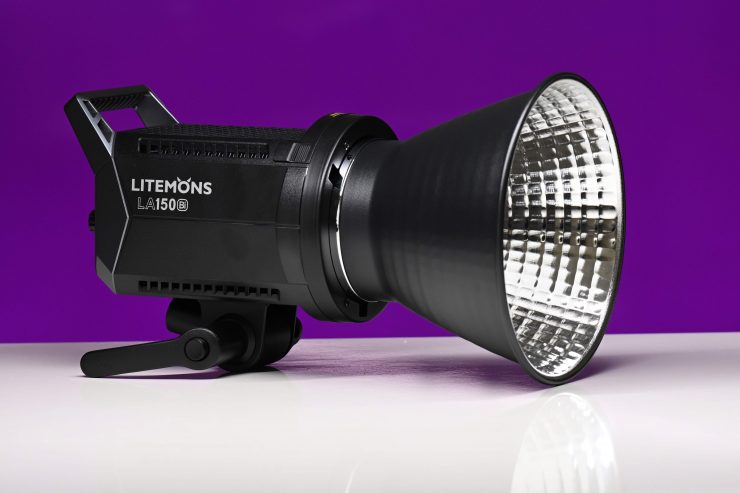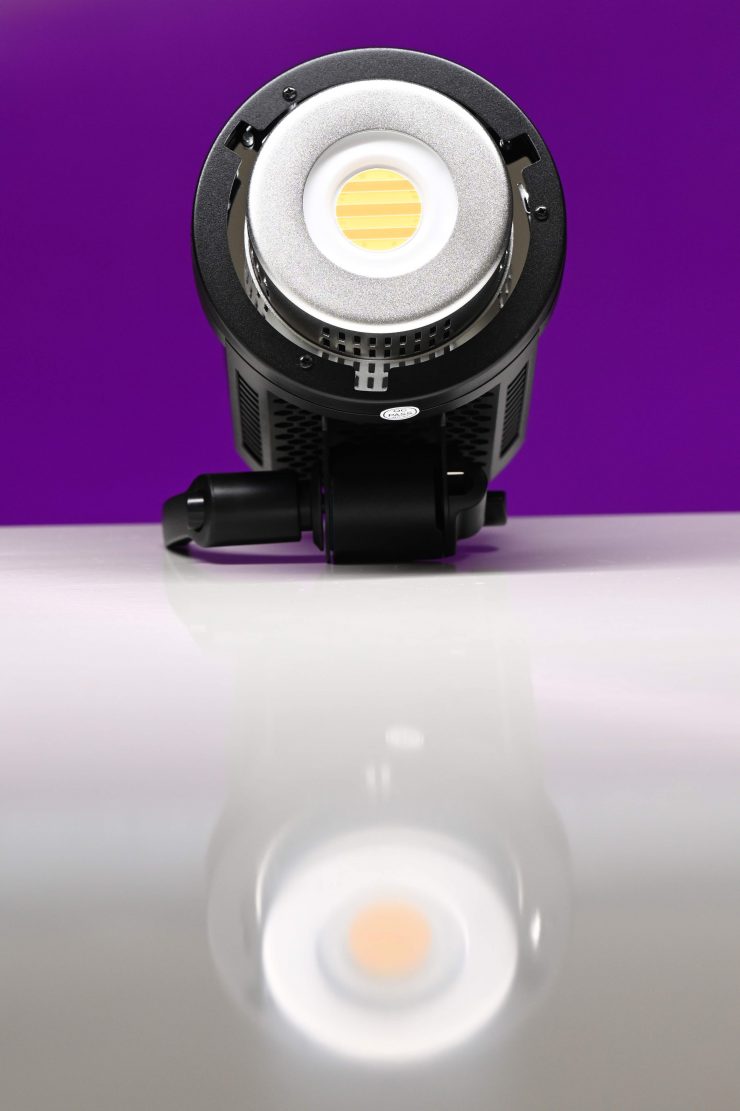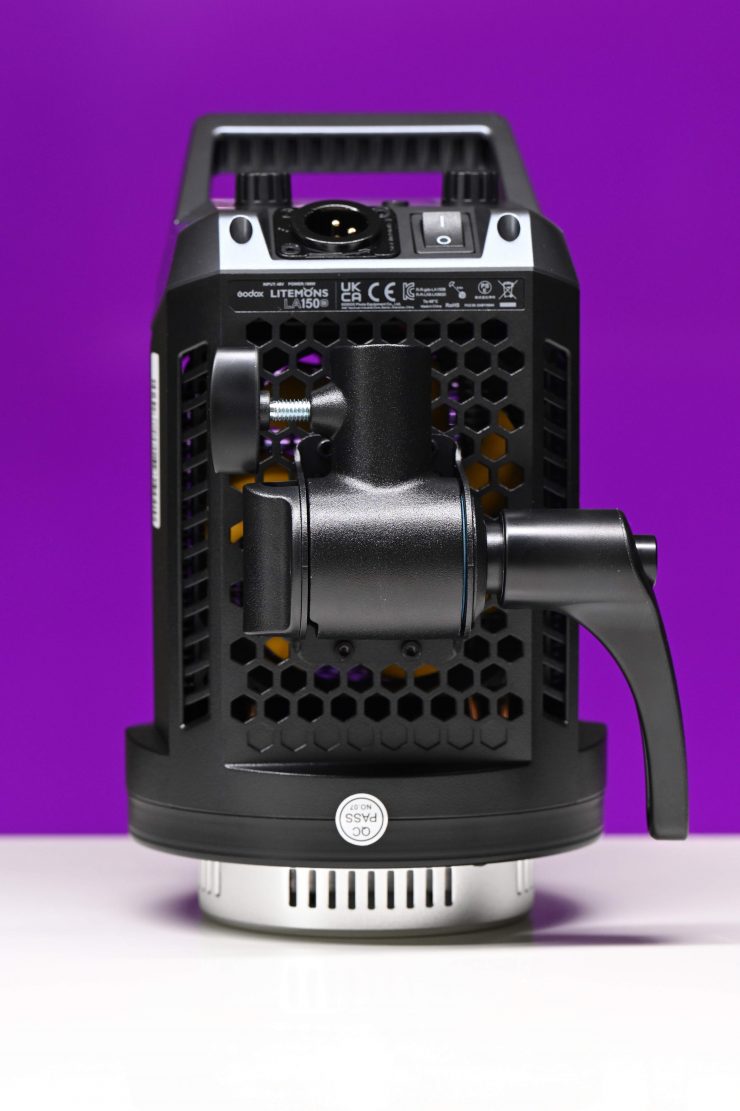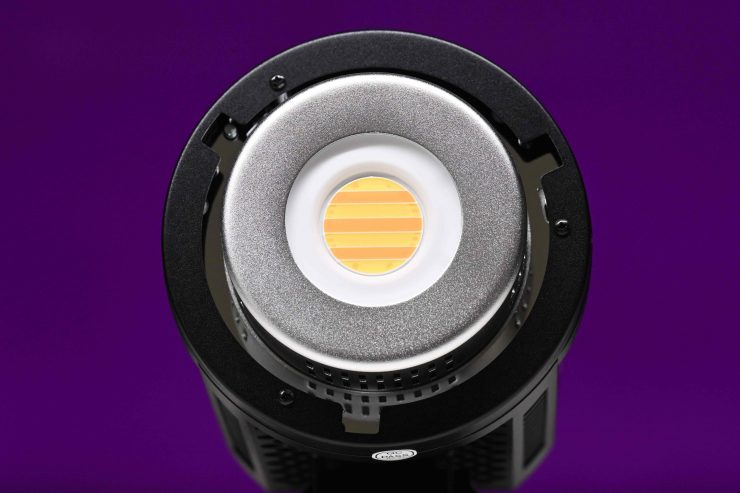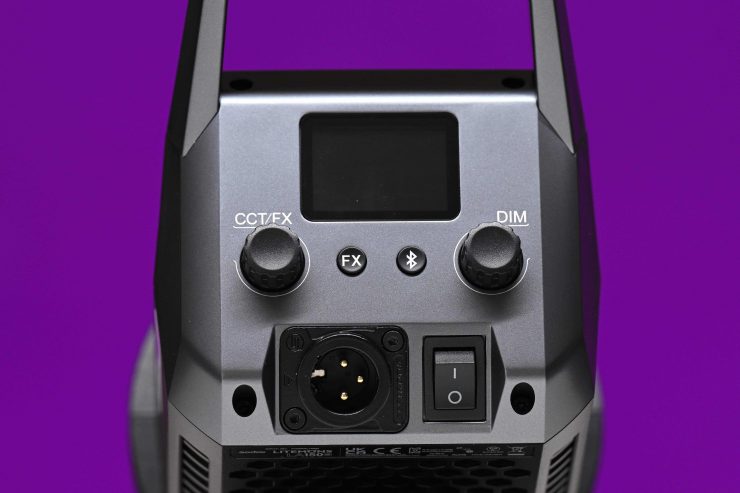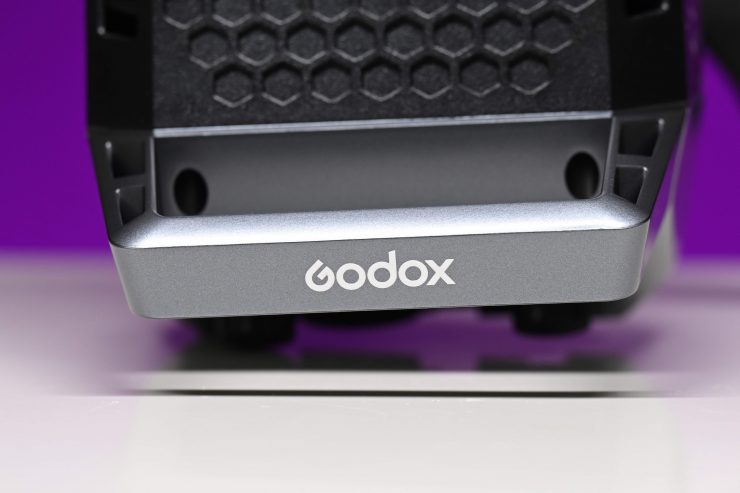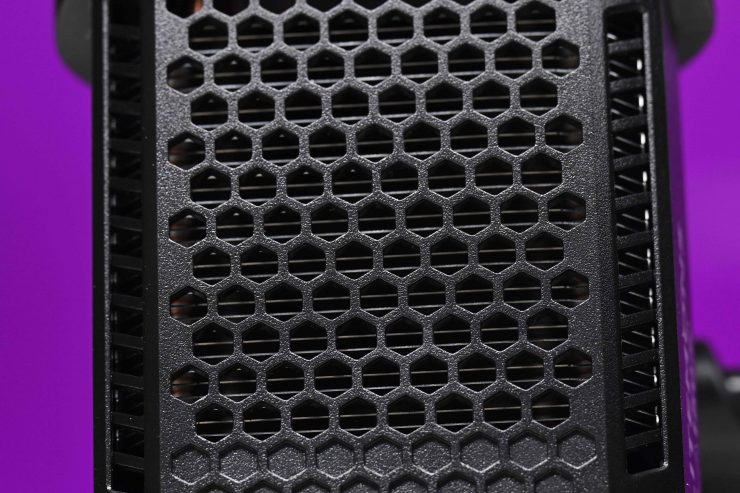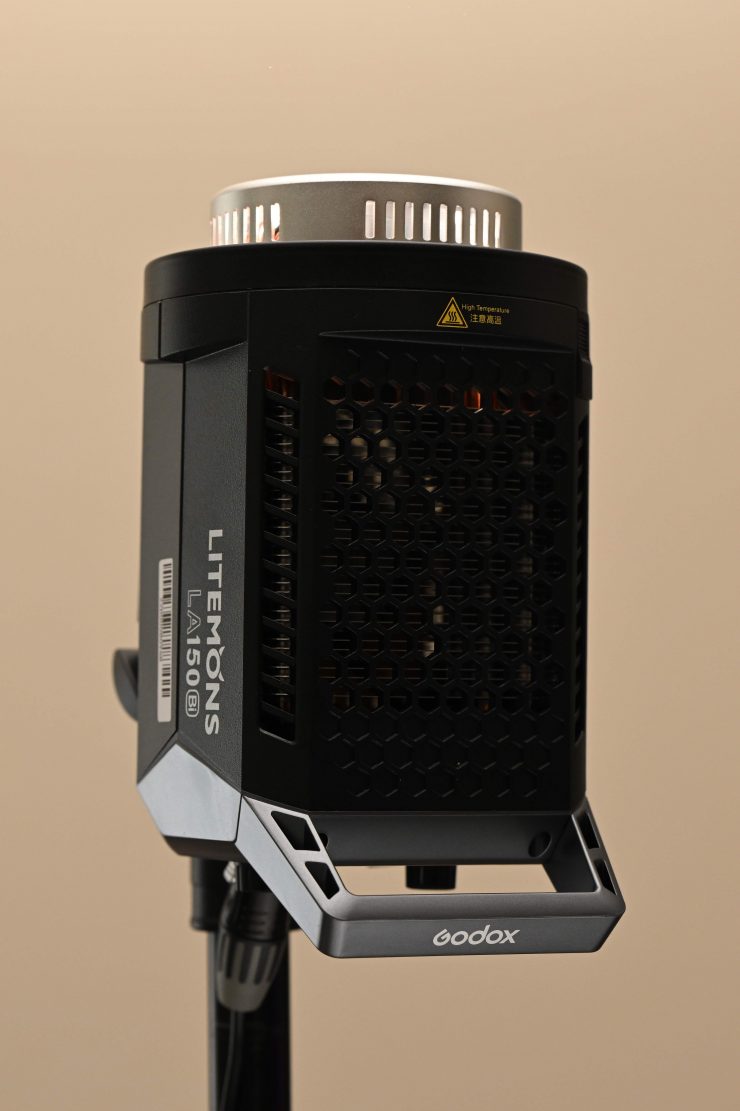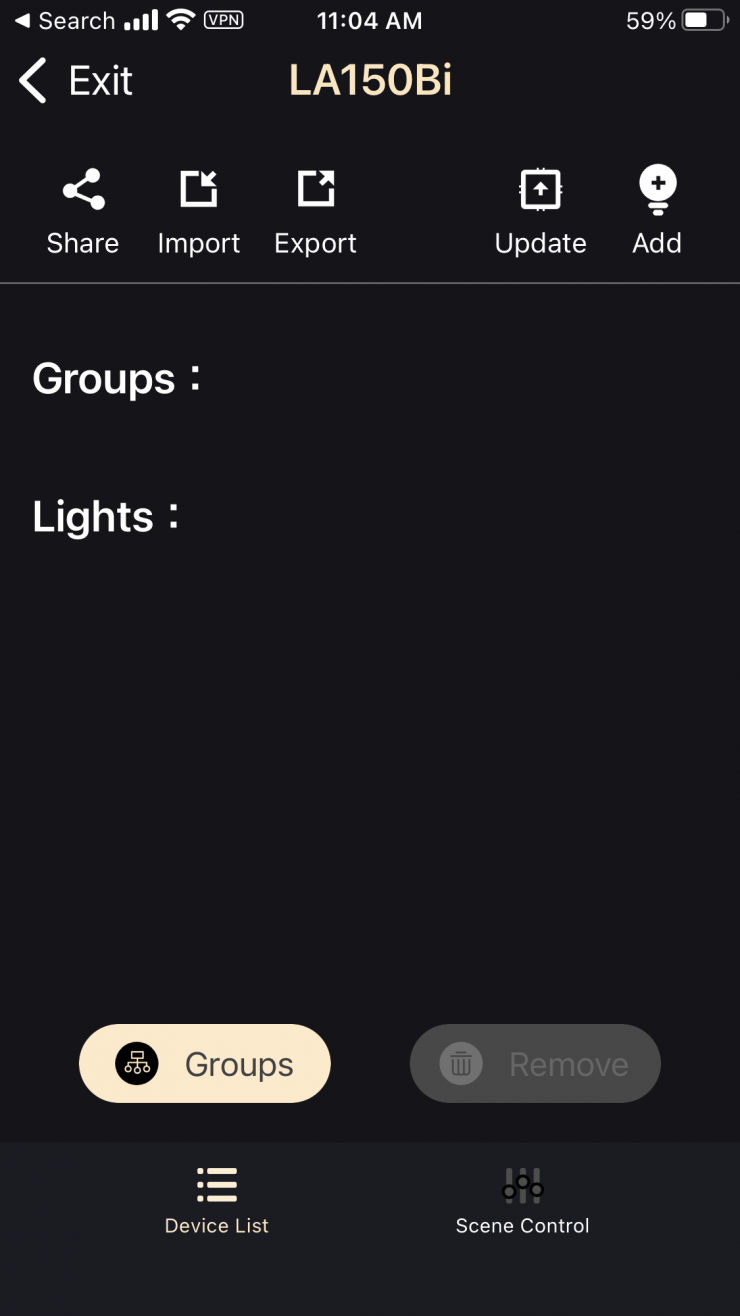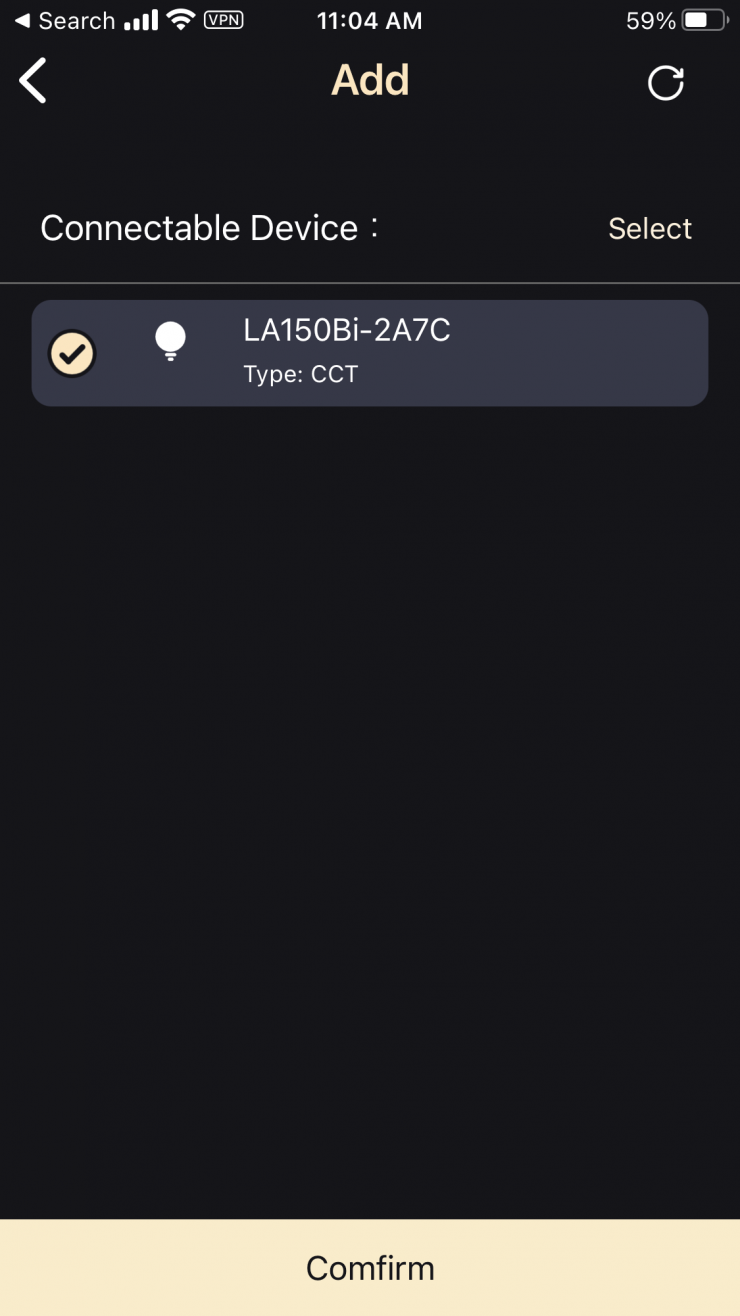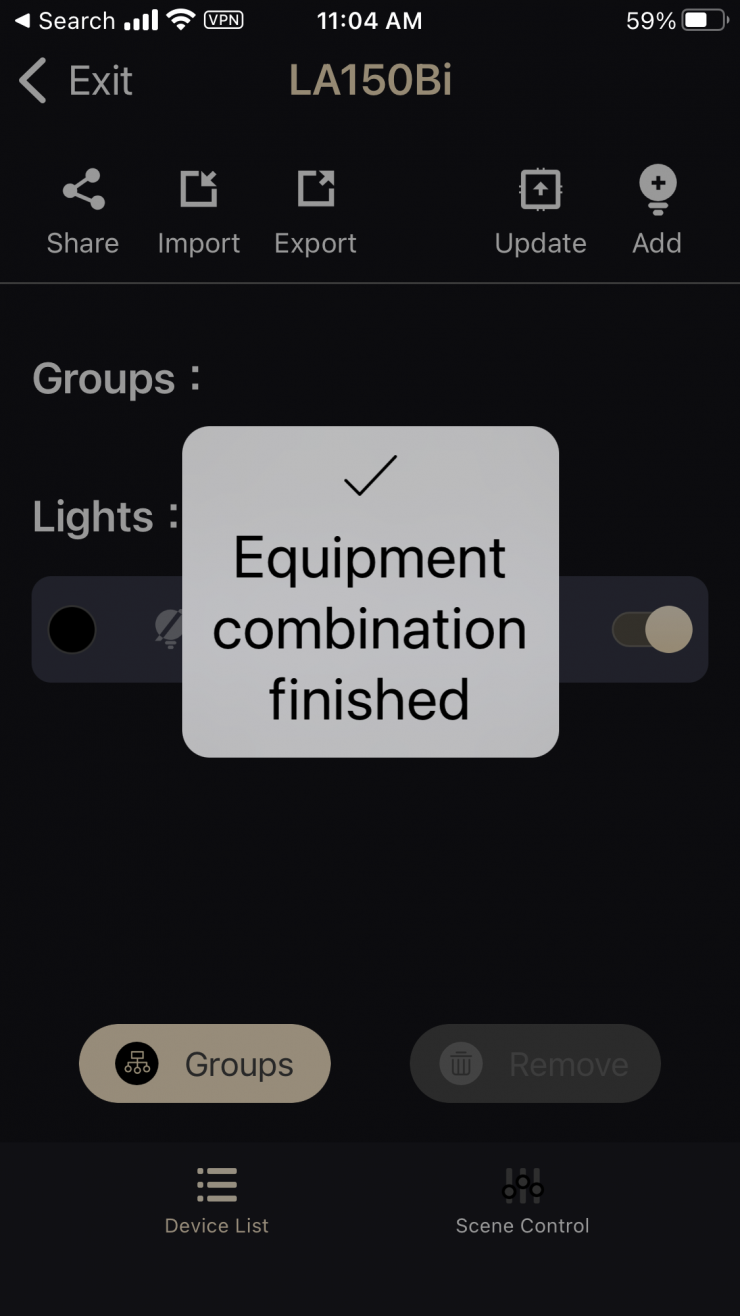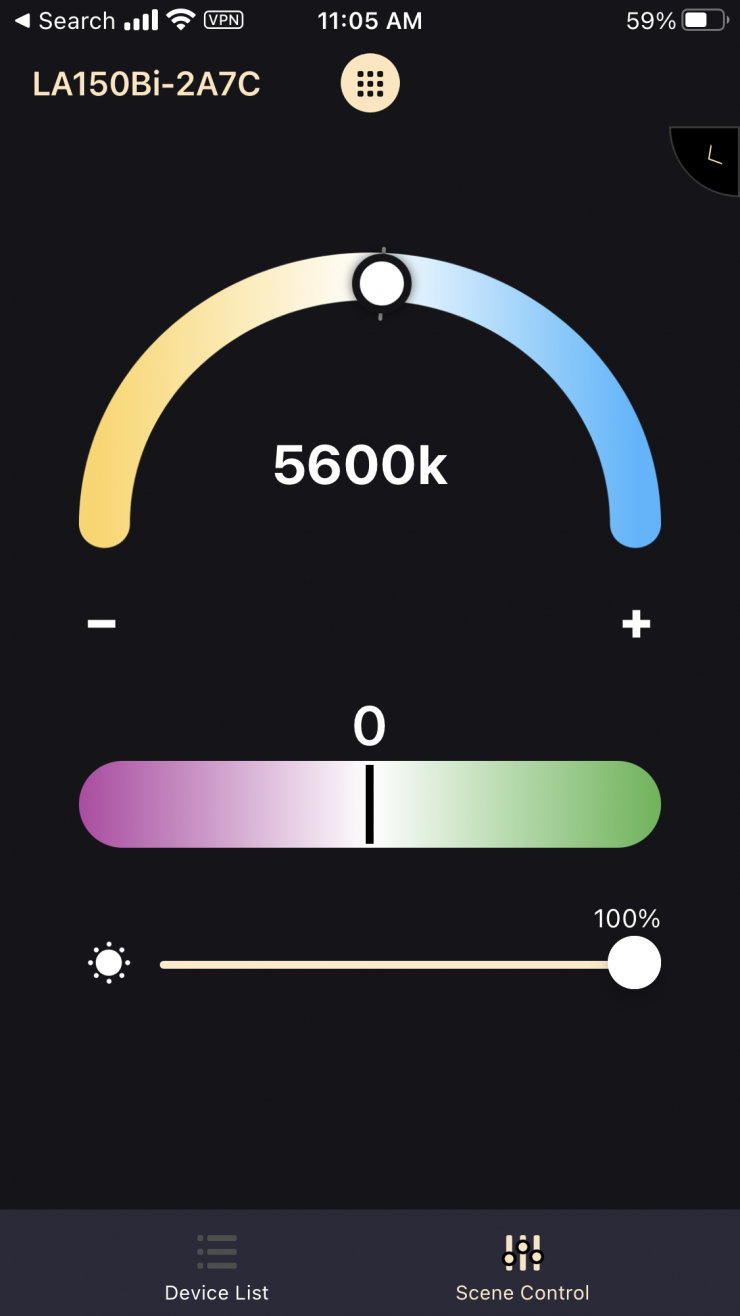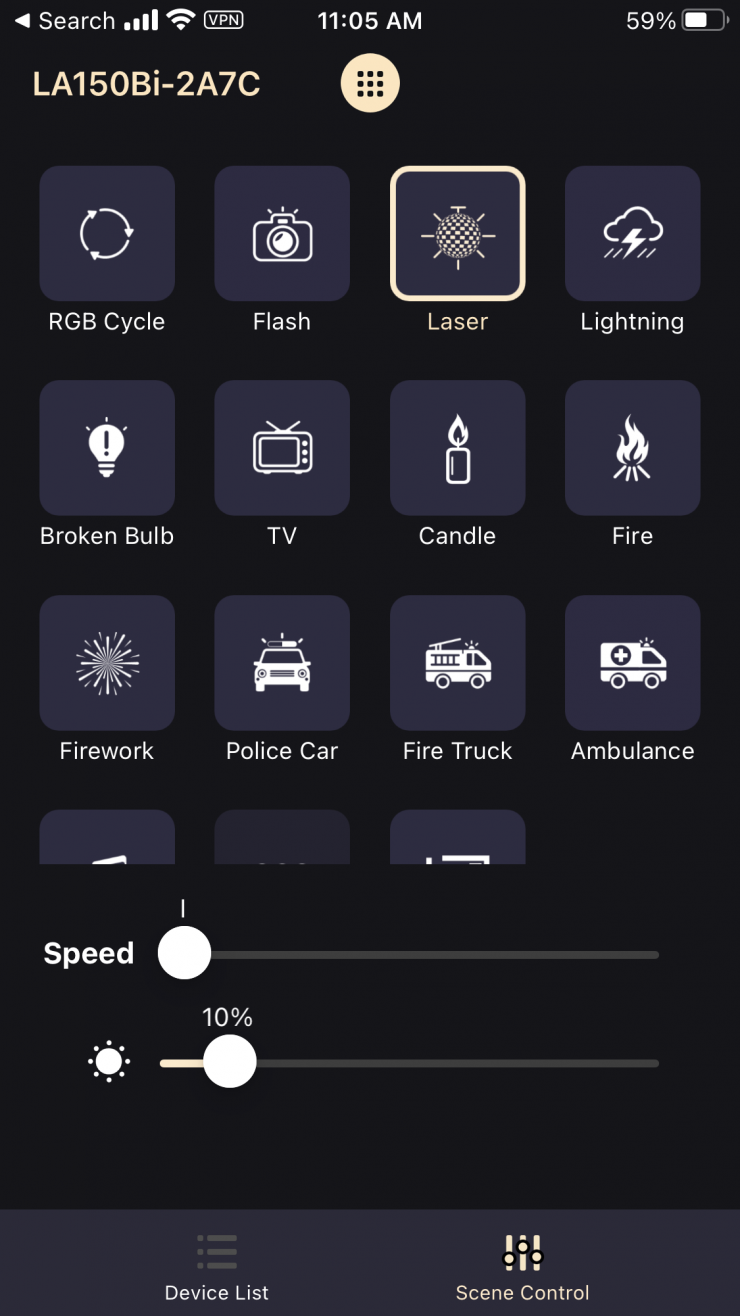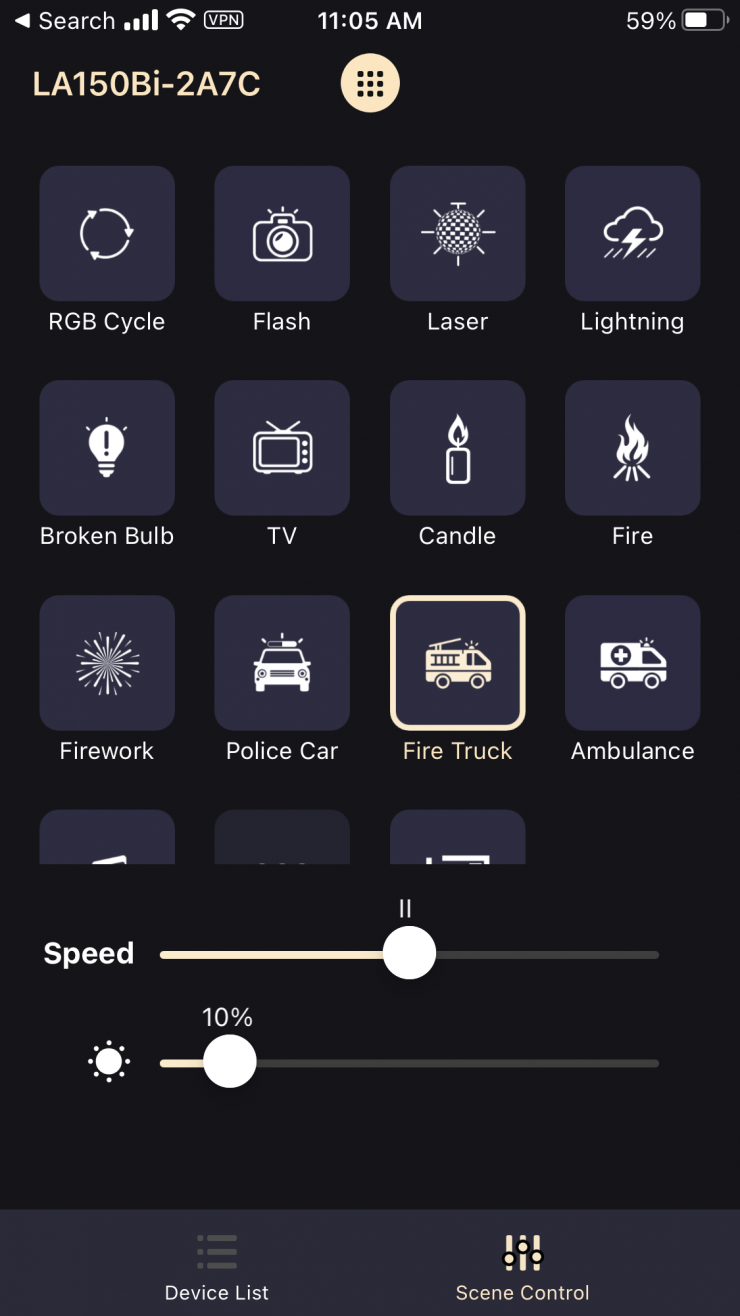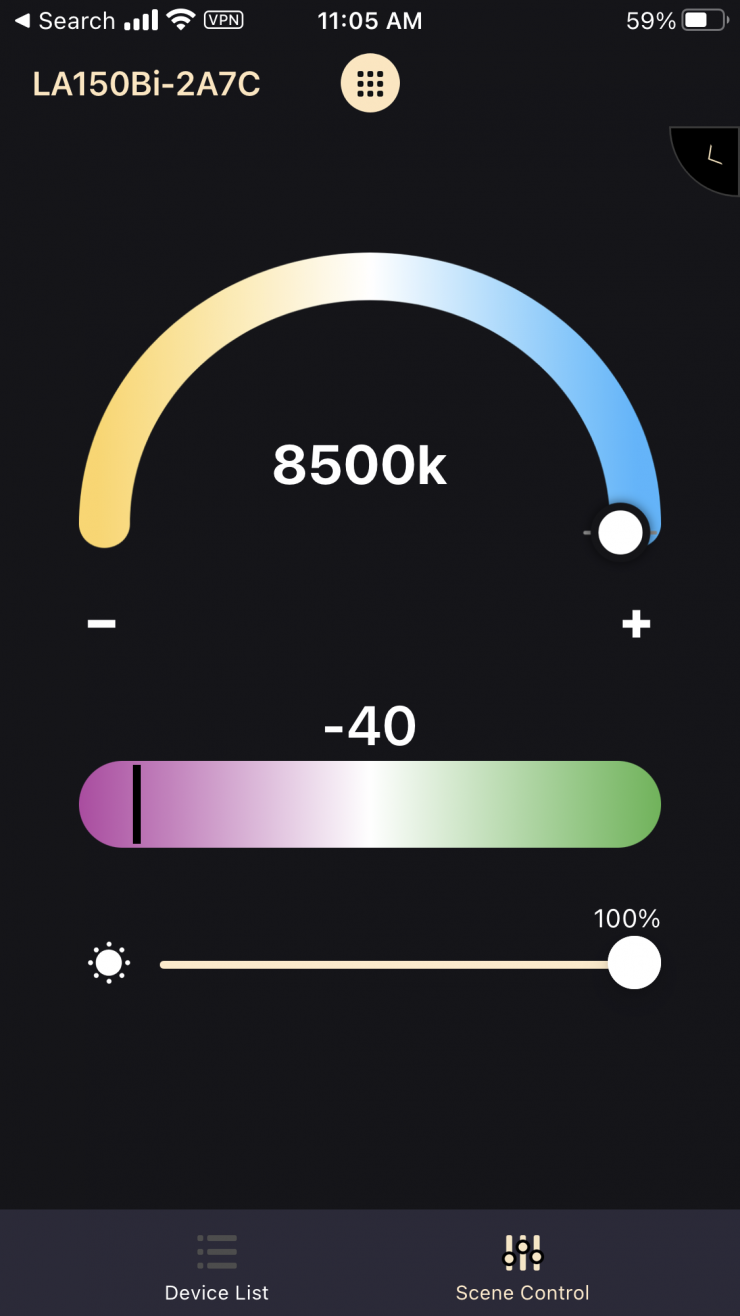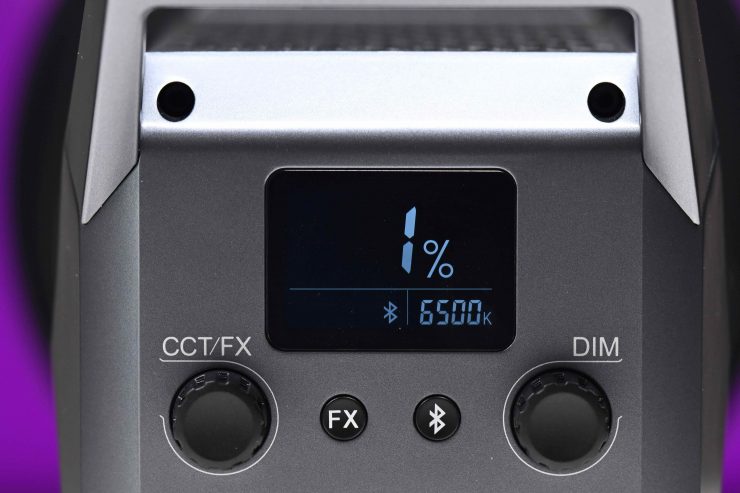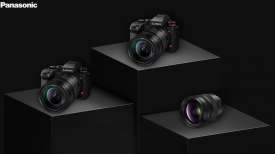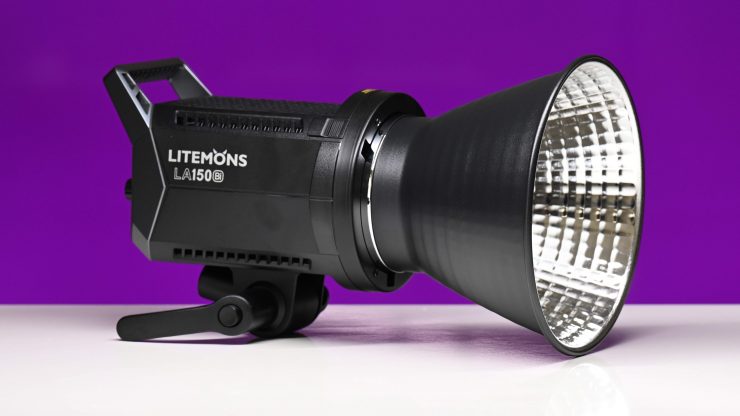
The Godox Litemons LA150Bi is a Bi-color version of the Godox Litemons LA150D that I recently reviewed on the site. This light is being touted as affordable 190W COB LED fixture.
If you are not familiar with Litemons it is a relatively new affordable spin-off series in a similar way to what Aputure did with amaran.
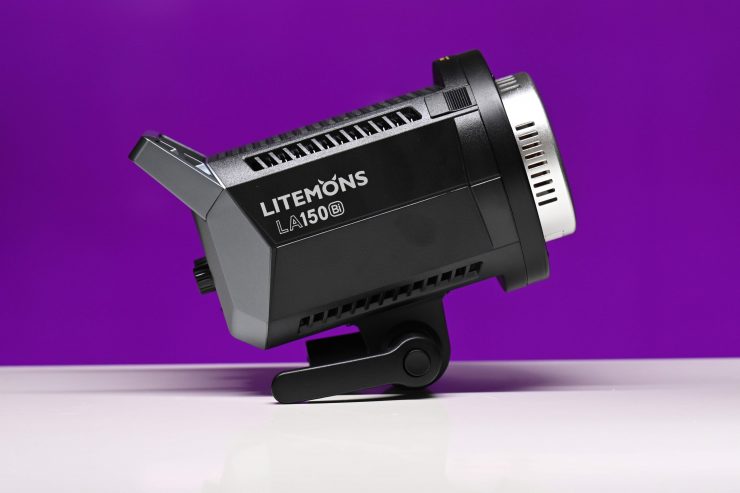
Versatile COB lights in this form factor have flooded the market in the last few years and their increasing popularity is mainly due to their swiss army knife style abilities, which enable them to be used for a variety of lighting scenarios.
Key features
- Bi-color COB
- 2800 to 5600K Kelvin Color Temperature
- 0-100% Dimming
- 11 Special Effect Settings
- Bluetooth Wireless Control
- Bowens-S Type Reflector Mount
- Built-In Umbrella Mount
- Dimming control from 0-100%
- High CRI/TLCI ratings of 96/97
- Compatible with Godox Light App
- Lightweight and compact design for quick setup and transport
So let’s find out how the Godox Litemons LA150Bi performs.
Concept
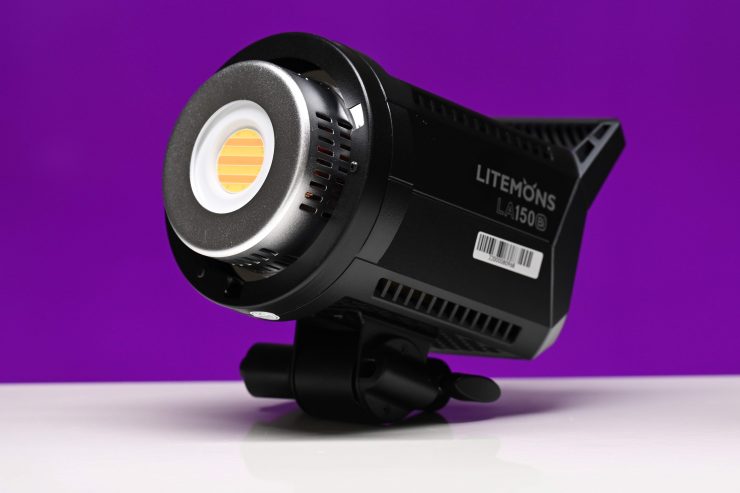
Like with most budget-orientated COB fixtures, the concept behind the Godox Litemons LA150Bi was to make a versatile and wallet-friendly lighting solution for YouTubers, live streamers, and content creators.
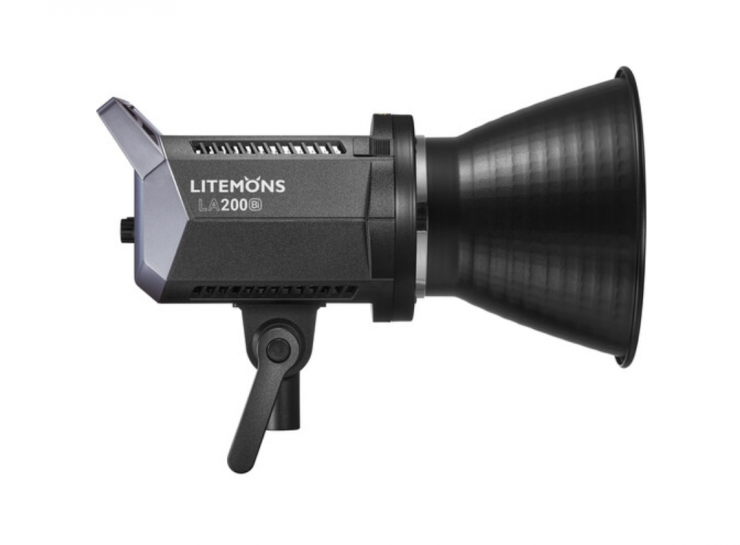

Litemons LA150Bi 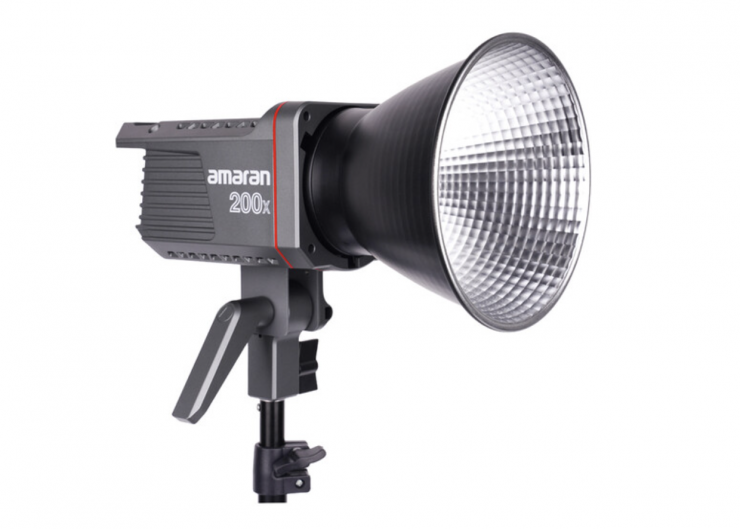
amaran 200x
Appearance-wise, the Litemons LA150Bi looks very similar to the amaran 200x.
Build Quality
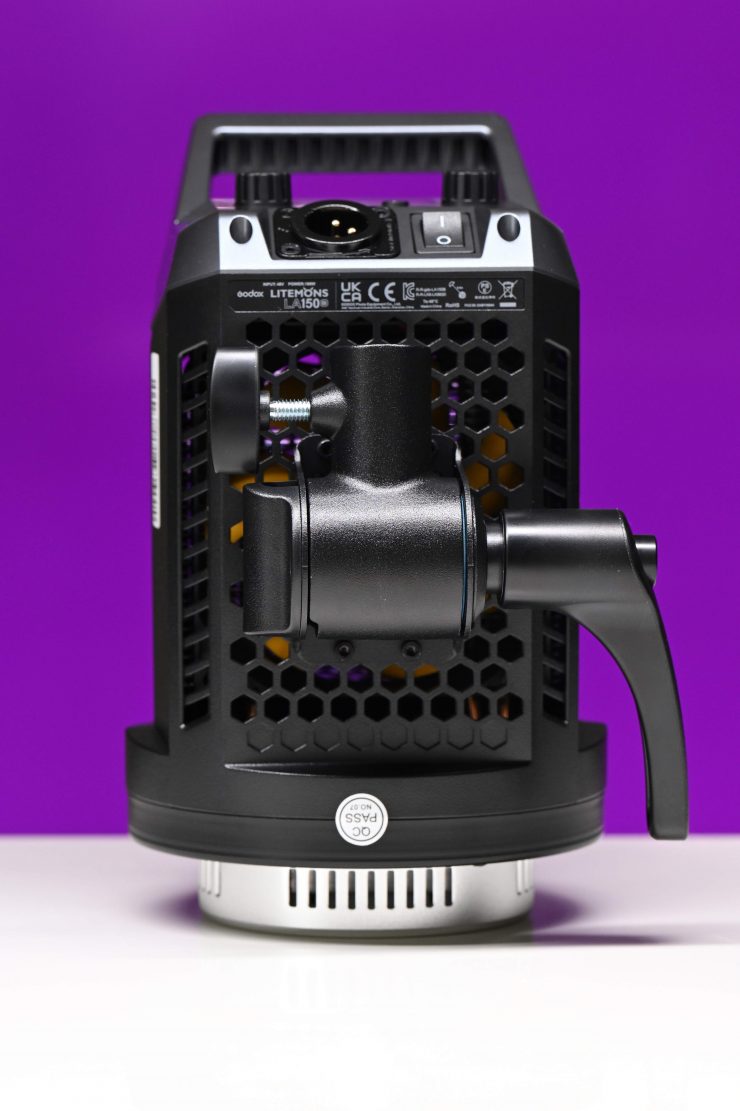
The build quality of the Litemons fixture is decent enough, especially at its price point. The housing seems reasonably robust and the swivel mount tightens securely.
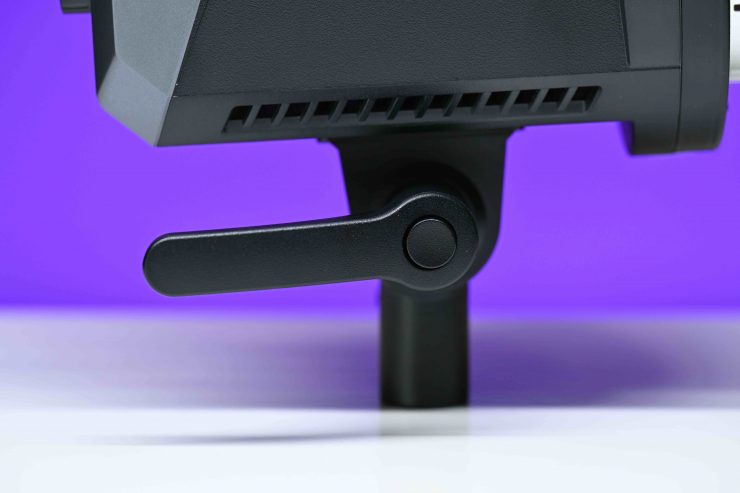
This swivel mount has been well thought out as a lot of users of lights such as these are going to be putting reasonably large modifiers onto the front.
The overall build quality is going to be very similar to the amaran 200x.
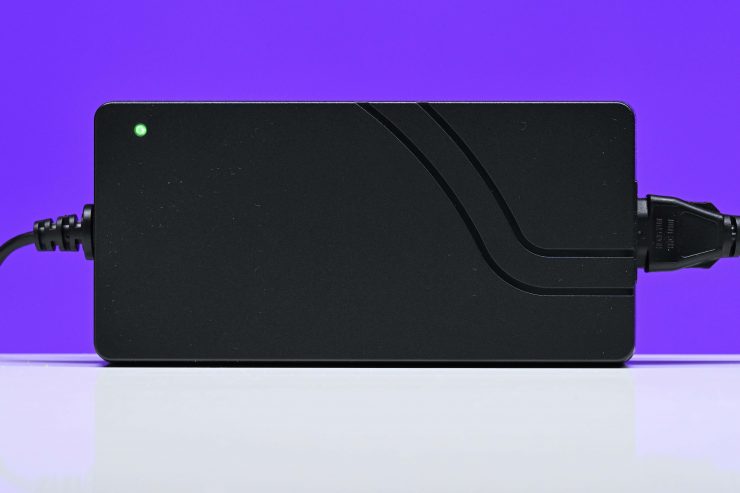
The controller is built into the light fixture, but there is a separate power supply.
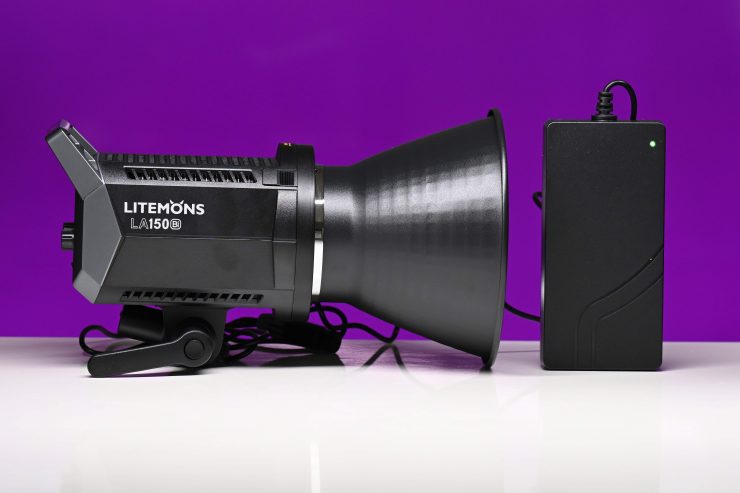
There is a 4-pin DC power cable that goes to the power supply. The cable is long enough so that you can position your fixture around 215cm / 7’1″ high and still keep the power supply on the ground.
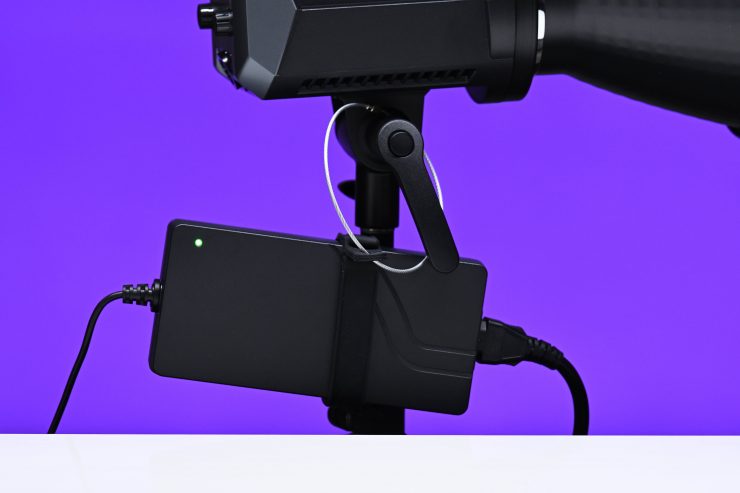
Godox actually gives you a fixing band and a wire rope that you can use to attach the power supply to the light, or to attach the light to something else if you happen to be using it in a place where it may fall.
What I also like is the actual power cable that goes from the power supply is 5m / 16’5″ long. This is nice to see because it is unusual to get a cable that long with a budget light.
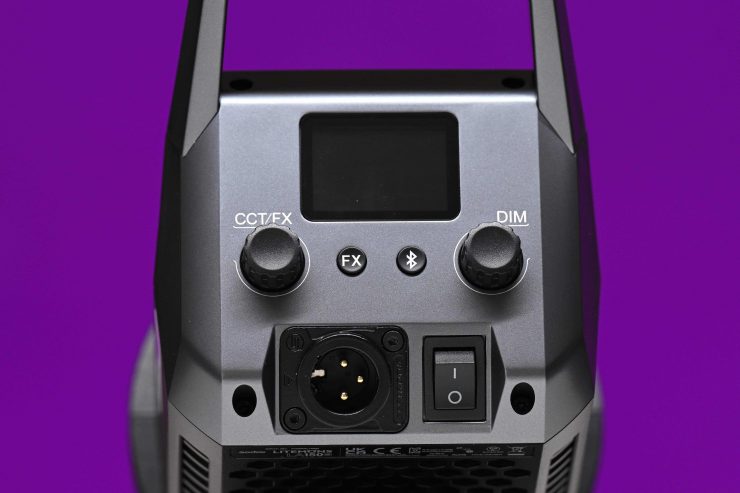
The On/Off switch and the buttons on the fixture are reasonably tactile, as are the dials.
Design
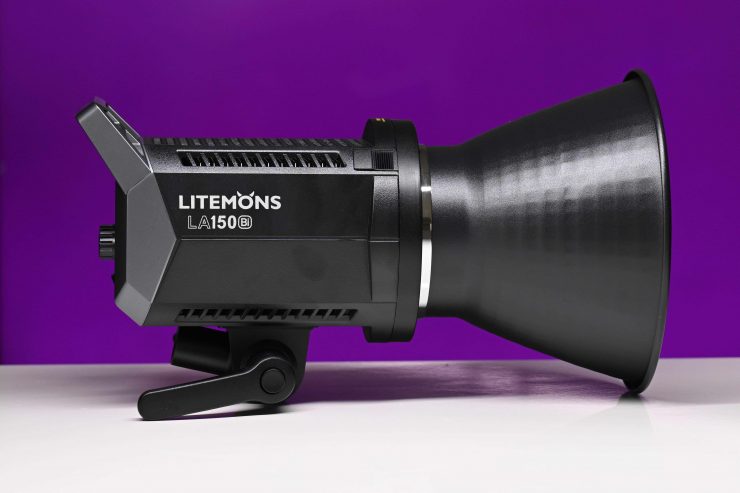
As far as the design goes, as I previously already mentioned, the light looks a lot like most other COB fixtures. Whether this is a coincidence is arguable, however, I think there is probably a design reason why COB spotlights all look very similar.
The design consists of the lamp head and a separate power supply. This is fairly common with lights such as these. It is nice not to have a separate controller and have it built into the fixture. This allows you to set up and pack away the light quickly.
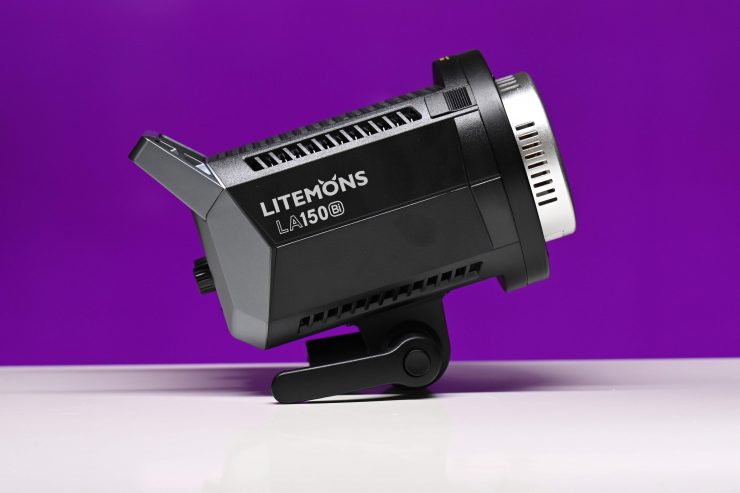
I also like that the swivel mount folds right up against the light so that it minimizes the footprint of the fixture when packing it away in a bag or case.
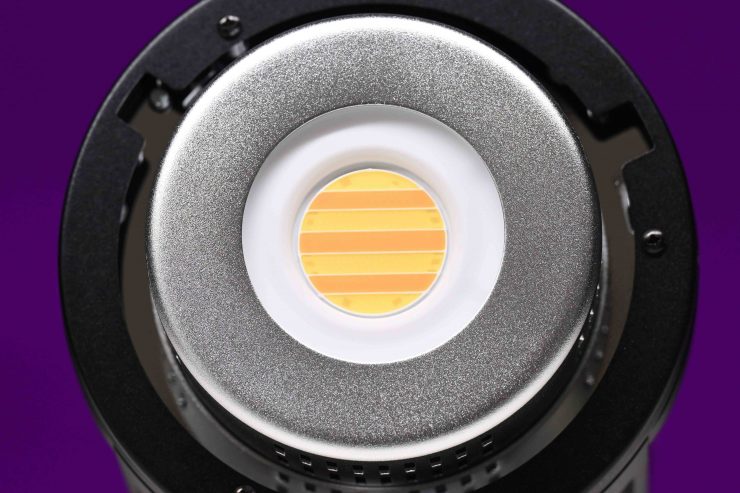
Lots of LED lights on the market, including the Godox Litemons LA150Bi are using COB technology. COB stands for “Chip On Board” where multiple LED chips are packaged together as one lighting module. The advantage of COB LEDs being multi-chip packaged is that the light-emitting area of a COB LED can contain many times more light sources in the same area that standard LEDs could occupy. This results in a greatly increased lumen output per square inch.
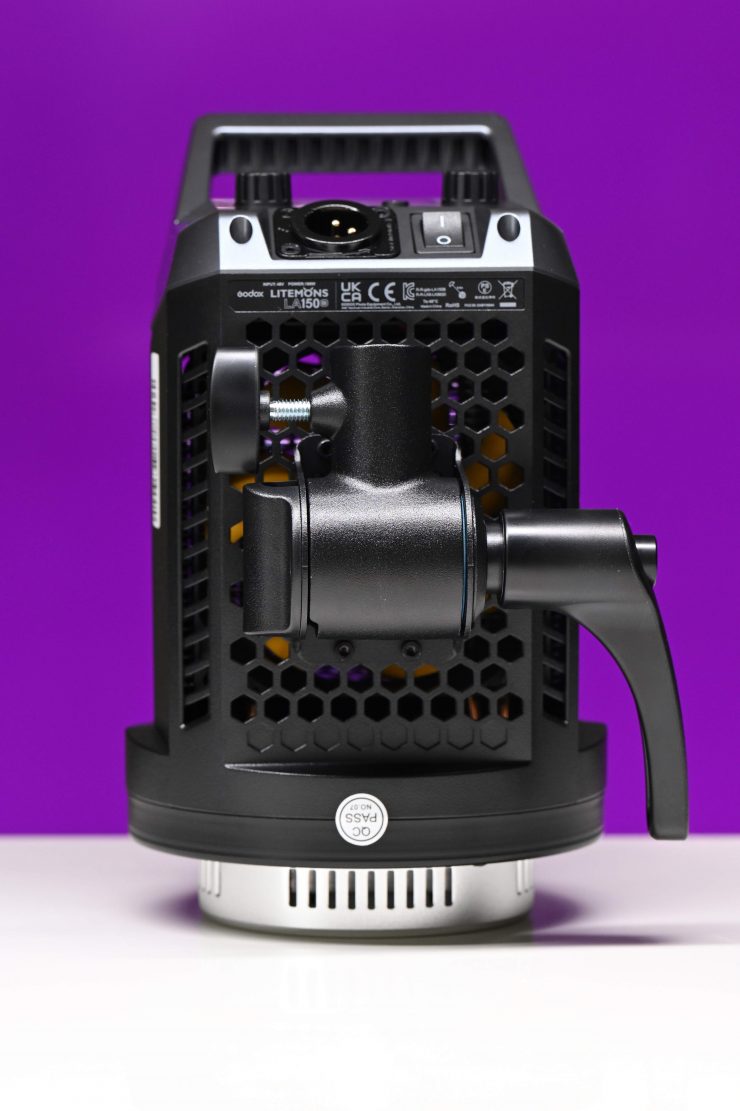

Litemons LA150Bi 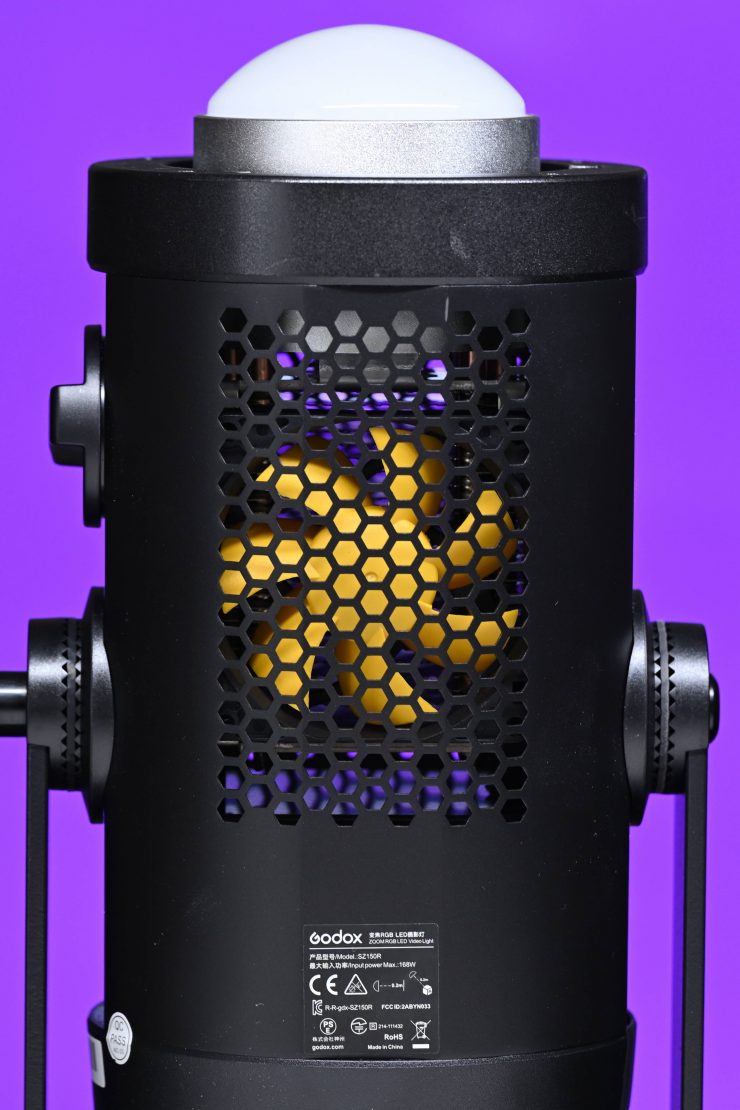
Godox SZ150R
The fixture does feature a rather large fan that is on the underside of the lights. This fan looks very similar to the one that can be found in the Godox SZ150R. The fan is somewhat obscured by the swivel mount.
The fan does emit some noise, but it is pretty quiet even when run at 100% output. For most shooting scenarios I don’t think the fan will be an issue that anyone would complain about.
The biggest problem with COB LED lights is that unless you diffuse them they are very bright to look at and unsuitable for directly lighting talent.
Weight & Size
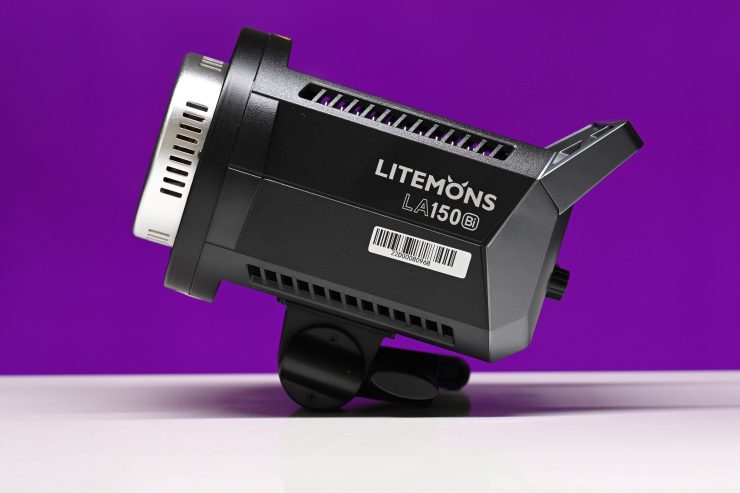
The Godox Litemons LA150Bi weighs 3.1 lb / 1.4 kg. The controller is built-in to the lamp head, there is just a separate AC adapter. That weighs around 1.47 lb / 670g.
So how does this weight compare to the amaran 200x that has a similar power draw?
| Light Head | Power Supply | |
| Godox Litemons LA150Bi | 3.1 lb / 1.4 kg | 1.47 lb / 670g |
| amaran 200x | 3.5 lb / 1.58 kg | 1.8 lb / 813g |
The nice aspect about the Godox and other lights of this size and weight is that you don’t need to carry around a heavy-duty light stand.
Beam Angle
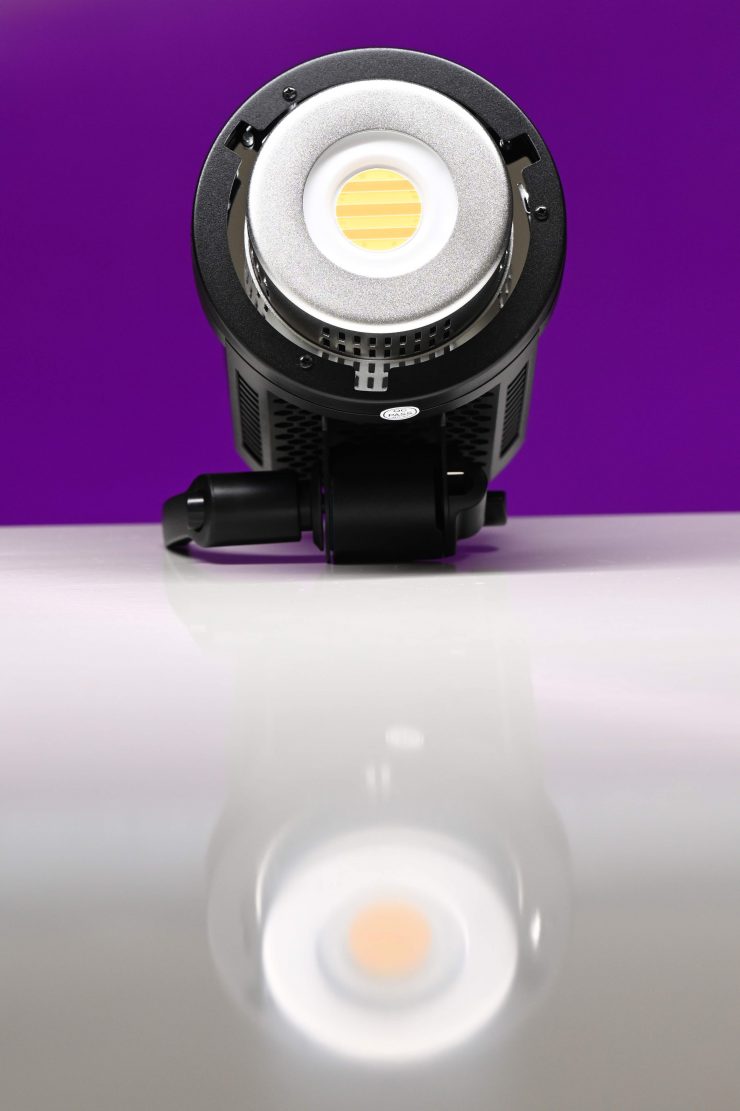
The beam angle of the fixture is 105°. As a comparison, the amaran 200x has the exact same beam angle of 105°. The reflectors for both the Godox and the amaran fixtures are claimed to be 55°.
Mounting
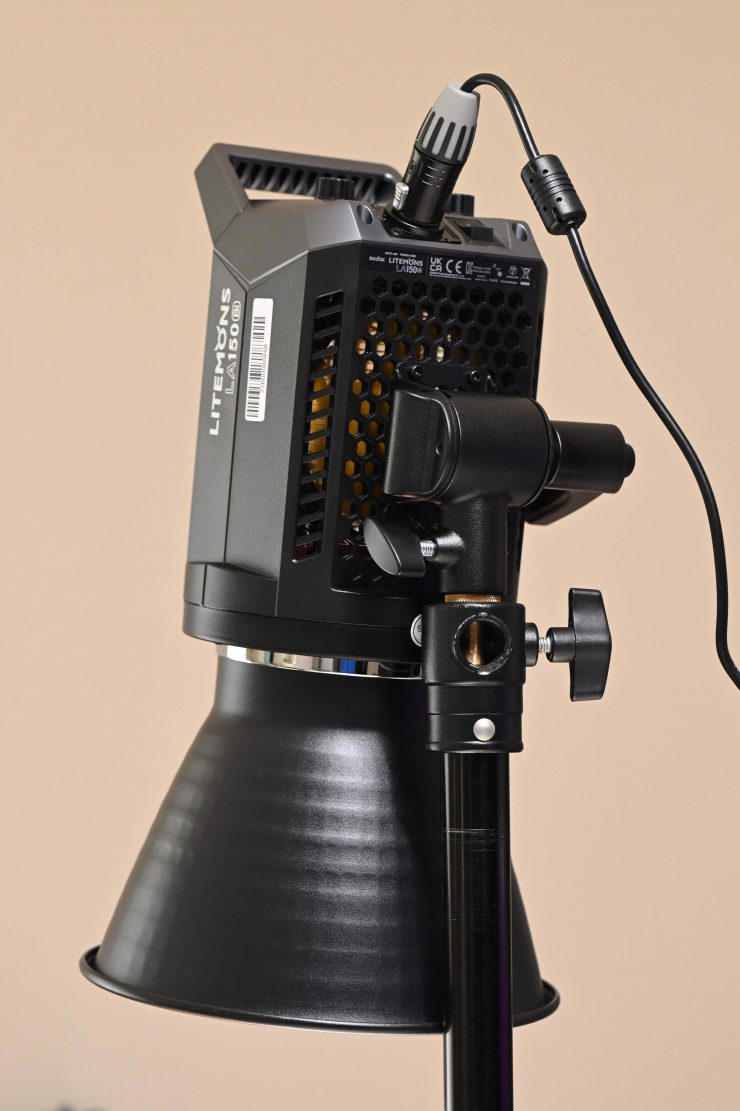
As I previously mentioned in the review, the LA150Bi comes with a swivel mount that is attached directly to the bottom of the lights. These provide 180 degrees of rotation and they give you enough clearance that you can move the light around and angle it in a variety of ways, however, just how much you can move it will depend on what lighting modifiers you are using.
Power Draw
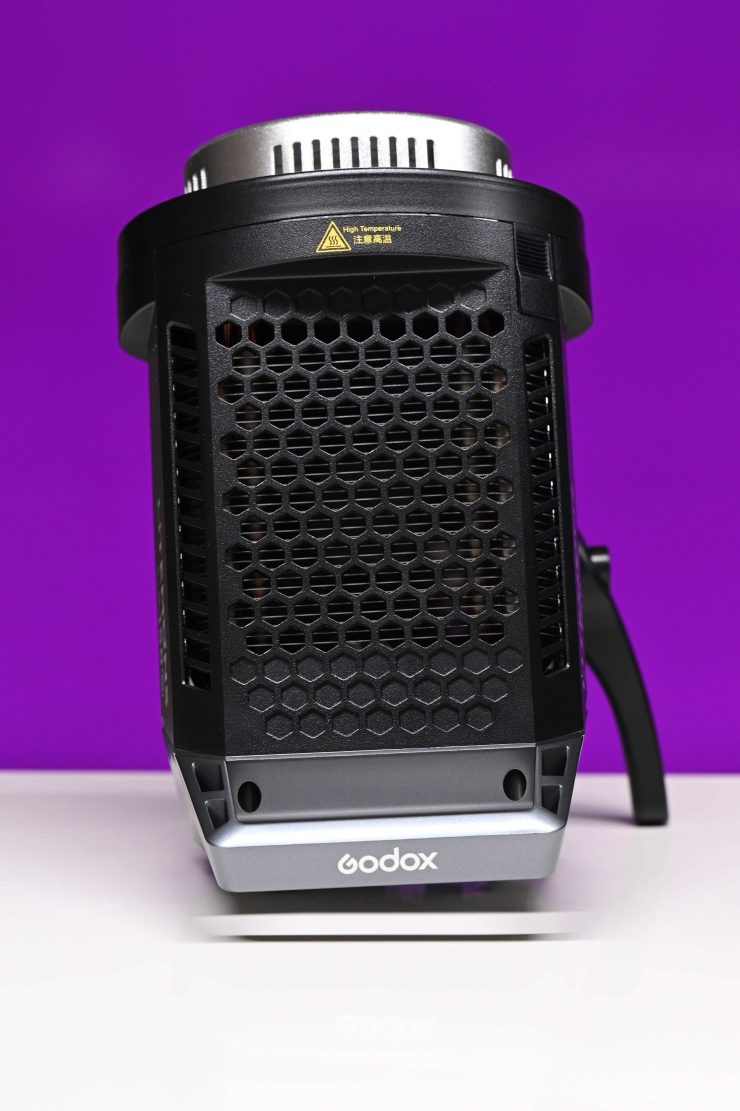
The LA150Bi draws 190W. Even though the power draw is 190W you can’t run these lights off a camera battery, they have to be run from mains power. The fixture only excepts a 48 VDC input.
This is a missed opportunity by Godox. With a 190W power draw, they should have allowed the light to be powered via V-lock or AB Gold mount battery. This would have made the light a more appealing proposition for a lot of shooters.
How does this power draw compare to the amaran 200x?
| POWER DRAW | |
| Godox Litemons LA150Bi | 190W |
| amaran 200x | 200W |
As you can see the Litemons LA150Bi draws 10W less than the amaran.
Controls & Menu System
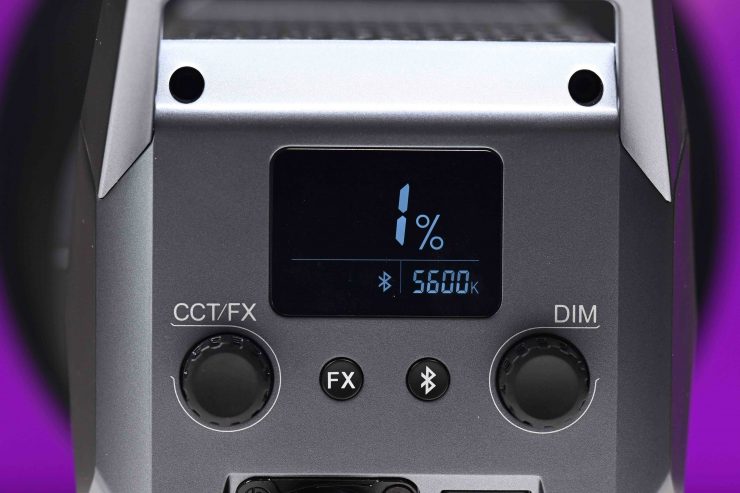
The rear LCD screen on the lights is very basic, but they do show you key information about the lights operating modes, brightness, CCT, etc. While it is not a touchscreen, it is still pretty quick to access all of the available lighting modes and make changes.
With a good light, you shouldn’t have to read a manual to work out how to operate it. You should be able to turn it on and use it straight away. In that respect, these lights are straightforward and easy to operate.
The physical dials that you use to control the light are tactile and I found it very easy to dial in the exact amount of output that I needed.
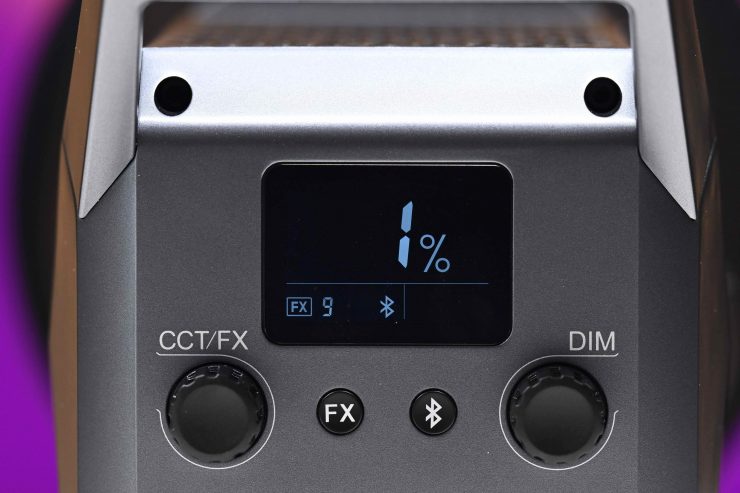
There isn’t any type of menu on the lights. There is only the ability to switch between CCT and the FX modes. There is also a small button that toggles the Bluetooth On/Off.
Bluetooth App
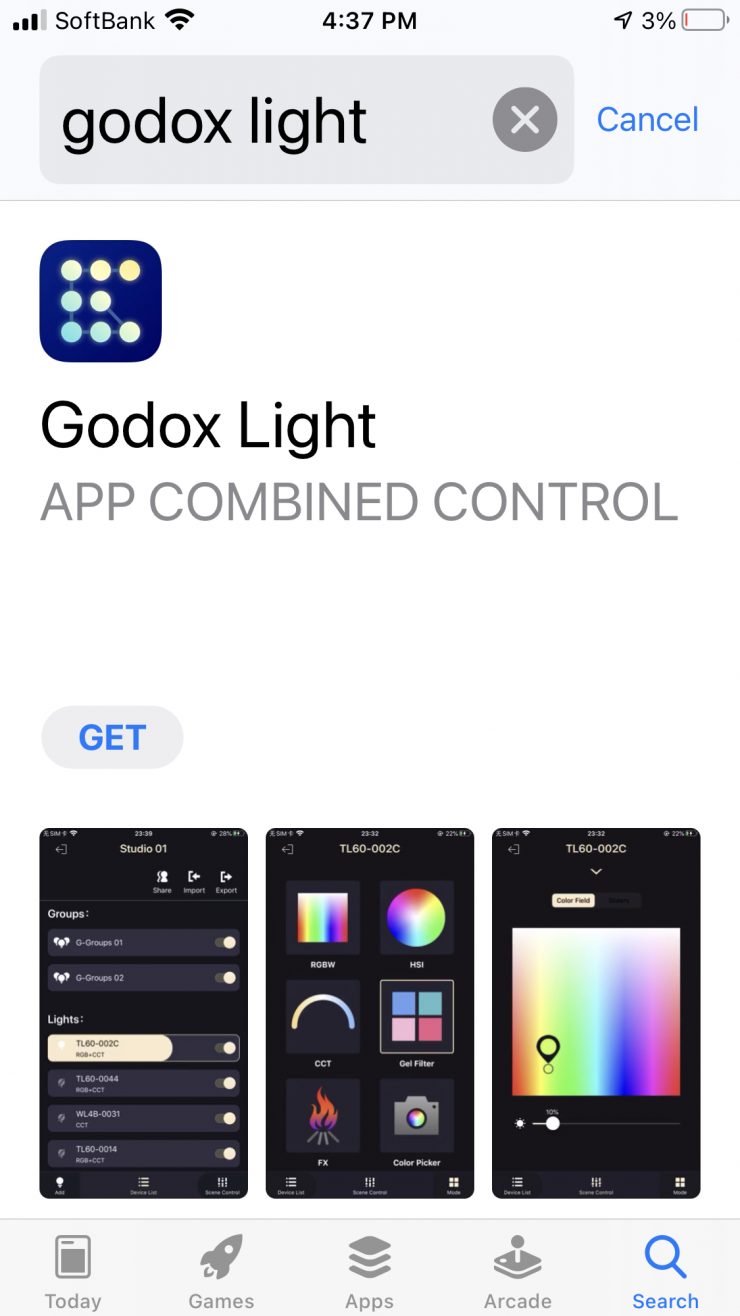
The light can be controlled via Bluetooth using the Godox Light App. It is very easy to add a light and start using it.
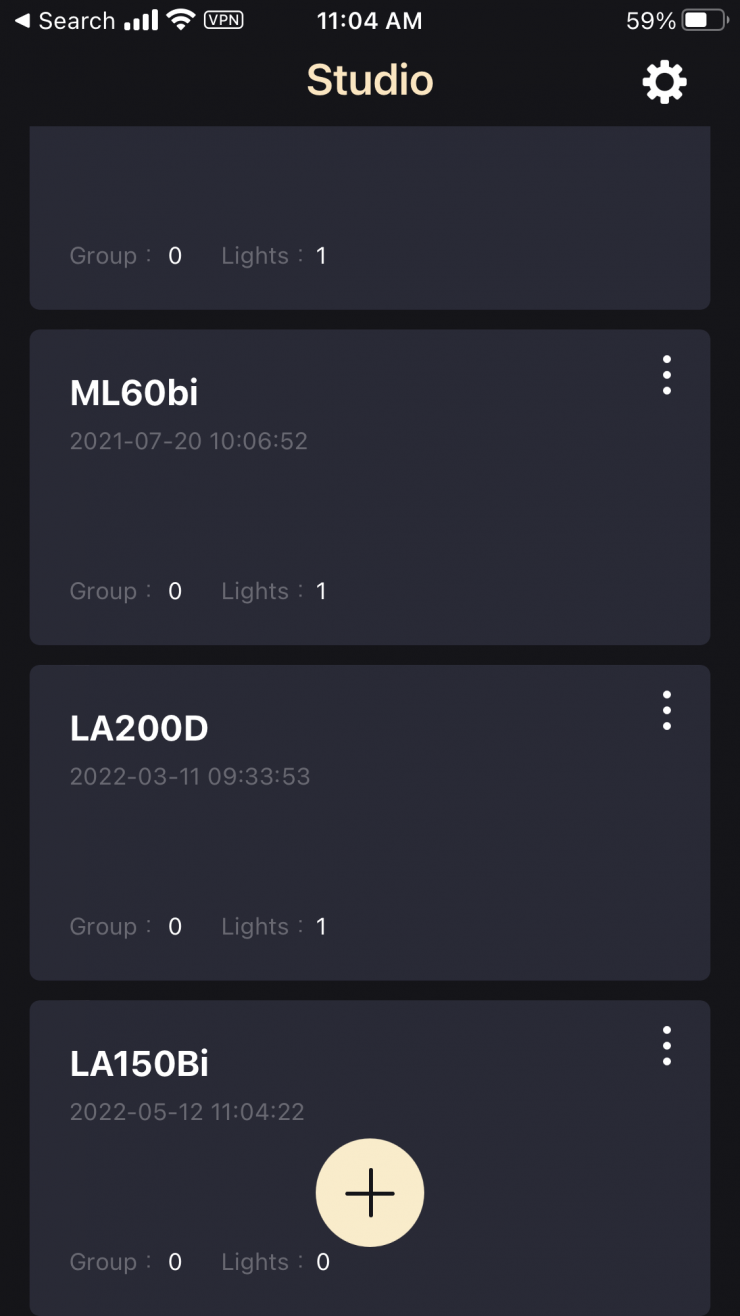
The only items you can actually adjust on the LA150Bi are the output intensity, Kelvin color temperature, FX modes and turning the light On/Off.
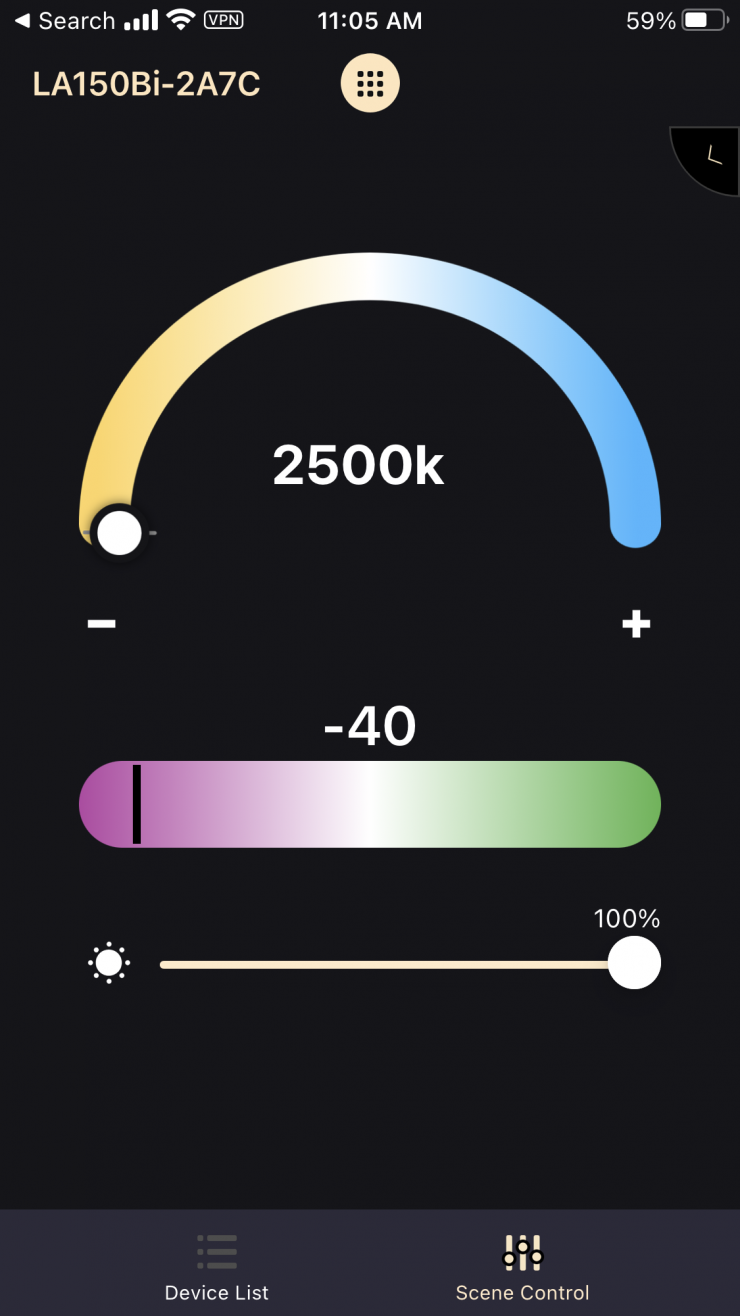
Because the App is made for a wide array of different Godox lights, the interface is still going to show controls for features that aren’t available on the LA150Bi. This is very annoying because you can select Kelvin color temperatures and items like +/- G/M and adjust them, even though they are not doing anything to the actual light. Godox really should change the app so this isn’t confusing for users.
In saying that, the app is still straightforward and easy to use. I like how they have made it intuitive and visually appealing. Lighting control shouldn’t be overly complicated.
The only downside when using the app is that when you make changes they don’t happen instantaneously, there is a slight delay. This is because the system is using Bluetooth.
Operating Modes
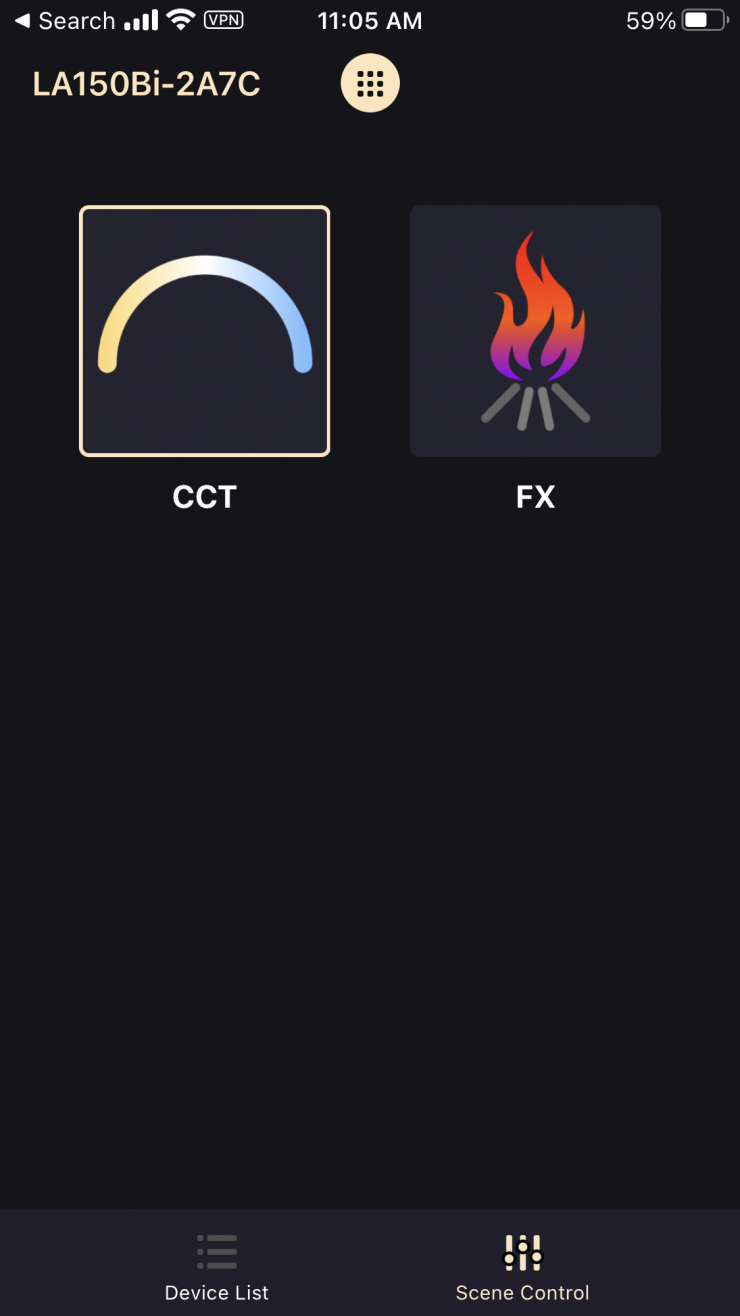
The light only has two operating modes that you can choose from:
- CCT MODE
- FX
CCT Mode
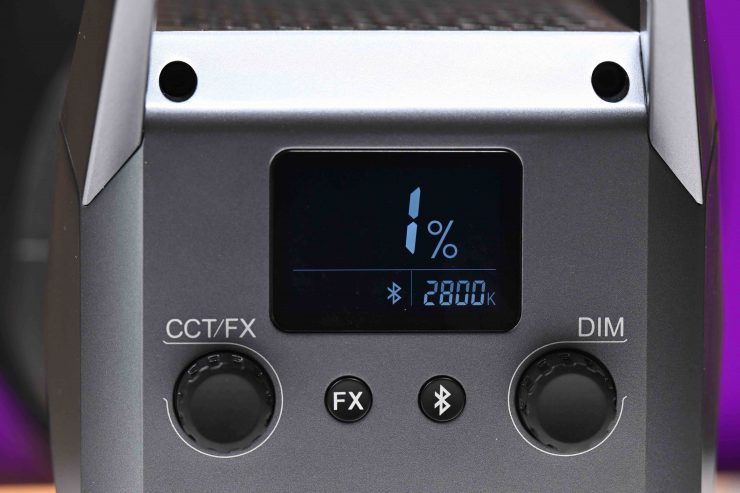
This is the mode most people are going to use these lights in. In the CCT Mode, you can adjust the Kelvin color temperature from 2800-6500K. You can only make Kelvin color temperature adjustments in increments of 100K
The fixture doesn’t feature any continuously variable (full minus green to full plus green) correction.
FX
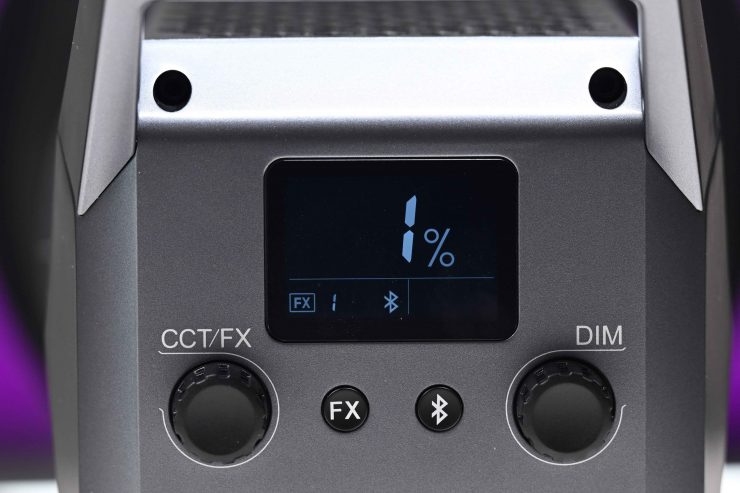
The FX mode lets you recreate a few lighting effects that can be handy for certain scenarios. The effects include:
- Flash 1
- Flash 2
- Flash 3
- Storm 1
- Storm 2
- Storm 3
- TV
- Broken bulb
All the effects modes can be individually adjusted, but you can only adjust the speed and intensity of the effects.
How does the LA150Bi compare to the amaran 200x?
| Godox Litemons LA200Bi | amaran 200x | |
| CCT | 2800-6500K | 2700-6500K |
| +/- GM | No | No |
| Effects | Yes | Yes |
| Mount | Bowens-S Mount | Bowens-S Mount |
| Beam Angle | 105° | 105° |
| Power Draw | 190W | 200W |
| App Control | Yes | Yes |
| Battery Power | No | Optional |
| Weight | 3.1 lb / 1.4 kg | 3.5 lb / 1.58 kg |
Photometrics
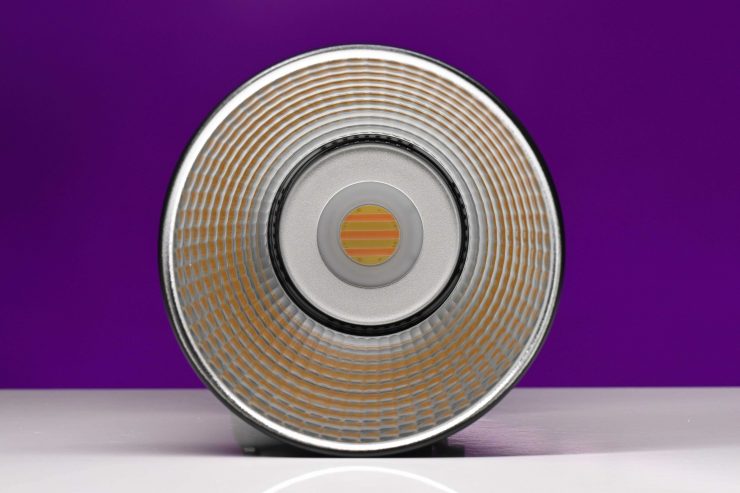
So now let’s get to the photometric results. I always test lights in this way so that I get a reference to how they compare to other fixtures. Results only tell part of the story and should never be used alone to judge a light. I have found from extensive testing over the years that certain lights that have good photometric results don’t always look good, and lights that have worse photometric scores can sometimes look better than their results indicate.
You have to look at all of the results and not just one set to make a conclusion about a light. Judging a light from one set of tests is like reading only one chapter in a book.
Different lights can also look different depending on what camera you happen to be using.
Output & Color Temperature Accuracy
I tested the Godox Litemons LA150Bi using a Sekonic C-800 Spectrometer to find out how much output the light had and how accurate the Kelvin color temperature reproduction was. All readings are taken at a distance of 1m (3.28ft) in a controlled environment. In the case of readings that were done with the reflector being used, these measurements were taken from the edge of the reflector and not from the COB.
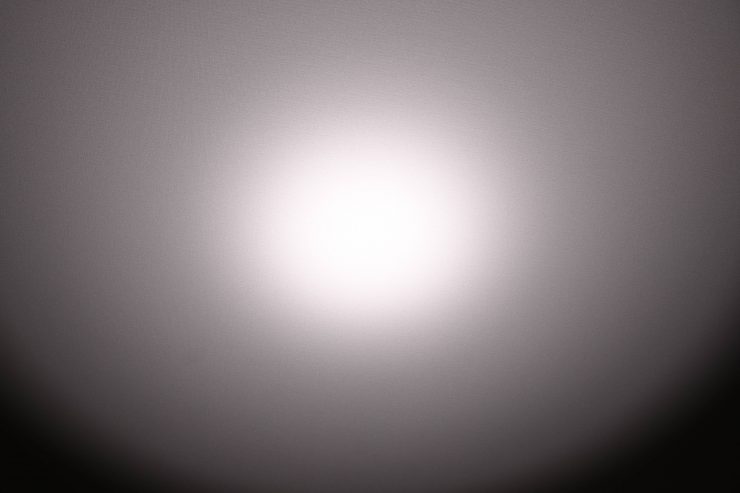
What you clearly need to know upfront is that when you use the reflector with this light there is a massive hot spot in the middle. The output figures when using the reflector are going to appear to be very impressive, but they don’t represent an accurate indication of the output.
LA150Bi
5600K Reflector
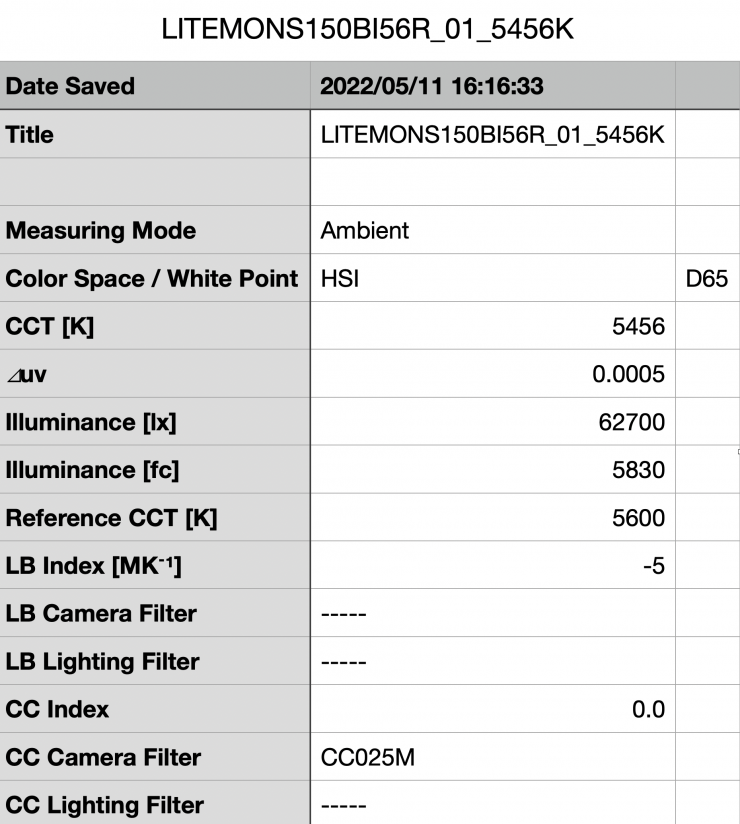
Above you can see the Godox recorded output of 62,700 lx (5830 fc) when using the standard reflector. At first glance, this is a lot of output for a 190W fixture, however, if you measure the output just 15cm / 5.9″ from the center it drops down to 25,791 lx. That is a whopping 58.8% less than in the center of the beam.
As a comparison, the Godox Litemons LA150D recorded an output of 76,600 lx (7110 fc) when using the standard reflector. That means the daylight only version of the light has 22.36% more output than the Bi-color version when used at 5600K.
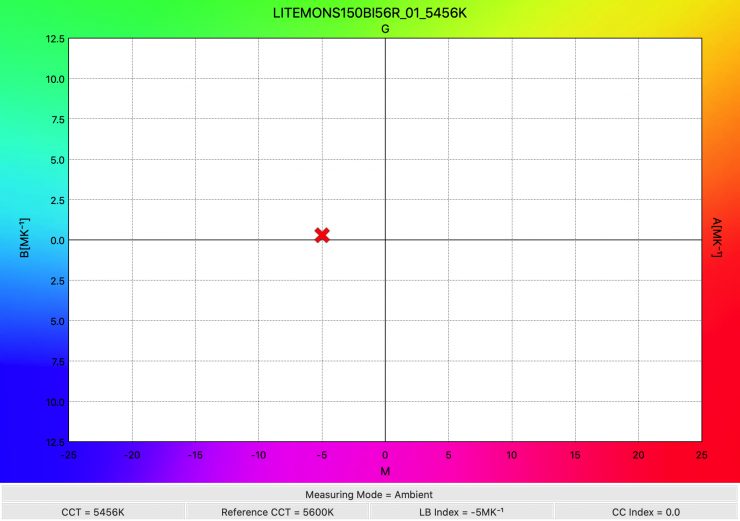
The light recorded a Kelvin color temperature reading of 5456K. This is a reasonable figure, but it could be better. As a comparison, the Litemons 150d recorded a more accurate figure of 5640K.
So how does this compare to the amaran 200x? Well, below you can see
| OUTPUT | CCT | |
| Godox LA150Bi | 62,700 lx | 5640K |
| amaran 200x | 51,600 lx* | NA |
*Not independently tested. This is the claimed output.
What you clearly need to remember is that the amaran draws 10W more. In the real world, you are probably not going to be able to tell too much of a difference between the two fixtures when it comes to output.
5600K Open Face
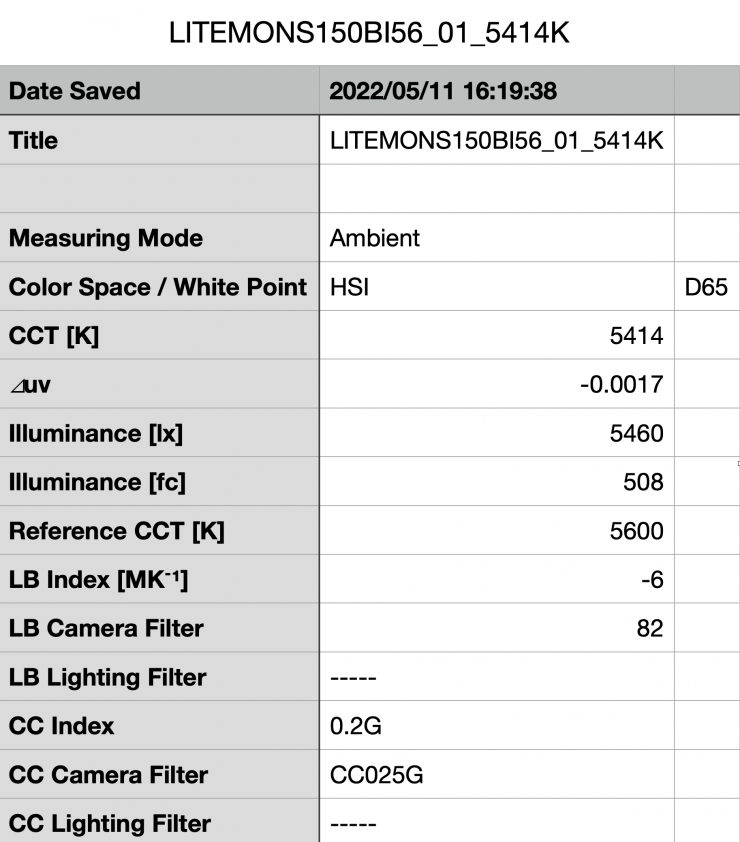
Above you can see the Litemons LA150Bi when used at 5600K without any reflector recorded an output of 5460 lx (508 fc). This was 91.27% less output than when used with the reflector.
As a comparison the Litemons LA150D when used at 5600K without any reflector recorded an output 7510 lx (698 fc). That means the daylight-only version of the light has 27.29% more output than the Bi-color version when used at 5600K.
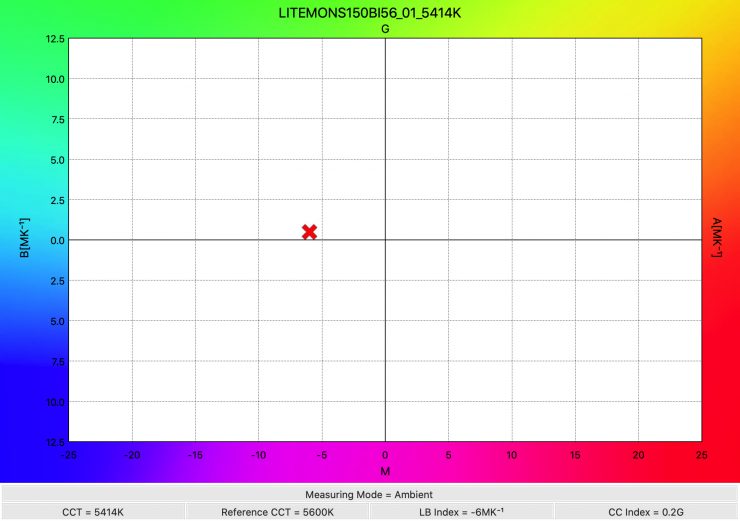
The light recorded a Kelvin color temperature reading of 5414K which wasn’t a good result. From my testing, it is clear that the reflector doesn’t alter the Kelvin color temperature of the light which is good to see. The Kelvin color temperature when using the light open face or with the reflector is almost identical.
As a comparison, the Litemons LA150D when used at 5600K without its reflector recorded a much more accurate reading of 5558K.
So how does the Litemons LA150Bi compare to the amaran 200x? Well, below you can see:
| OUTPUT | CCT | |
| Godox Litemons LA150bi | 7510 lx | 5640K |
| amaran 200x | 6700 lx* | NA |
*Not independently tested. This is the claimed output.
3200K Reflector
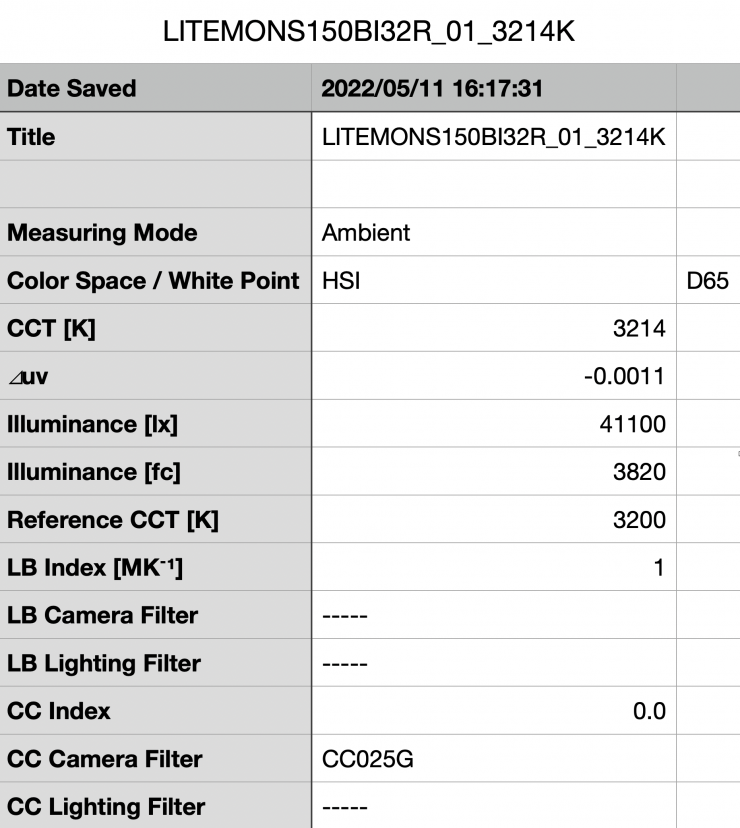
Above you can see that the Litemons LA150Bi recorded an output of 41,100 lx (9200 fc) when the reflector was used and it was set at 3200K. Again, this output figure is very deceiving. If I measure the output of the light, 15cm to the left or right of the center the output drops massively. At the same distance, 15cm from the center of light, I recorded a figure of 17,684 lx, which is a whopping 59.9% less than the center of the beam.
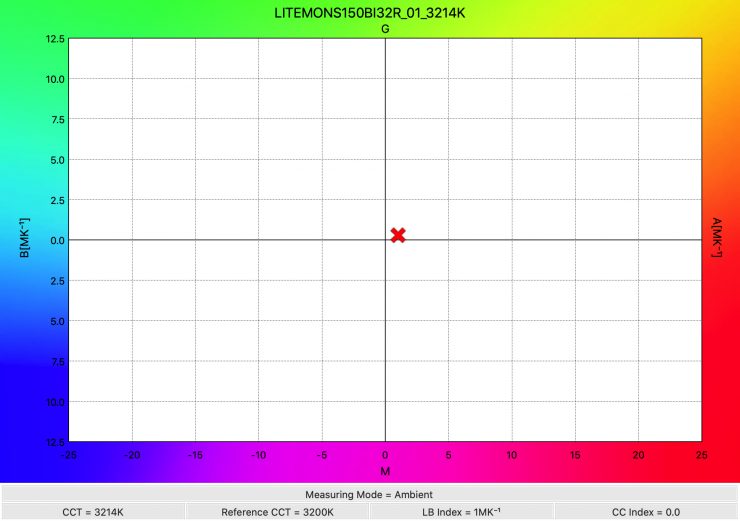
The light recorded a Kelvin color temperature reading of 3214K which was an excellent result.
So how does this compare to the amaran 200x? Well, below you can see:
| OUTPUT | CCT | |
| Godox Litemons 150Bi | 44,100 lx | 3214K |
| amaran 200x | 42,300 lx* | N/A |
*Not independently tested. This is the claimed output.
Both fixtures have roughly the same amount of output when used at 3200K.
3200K No Reflector
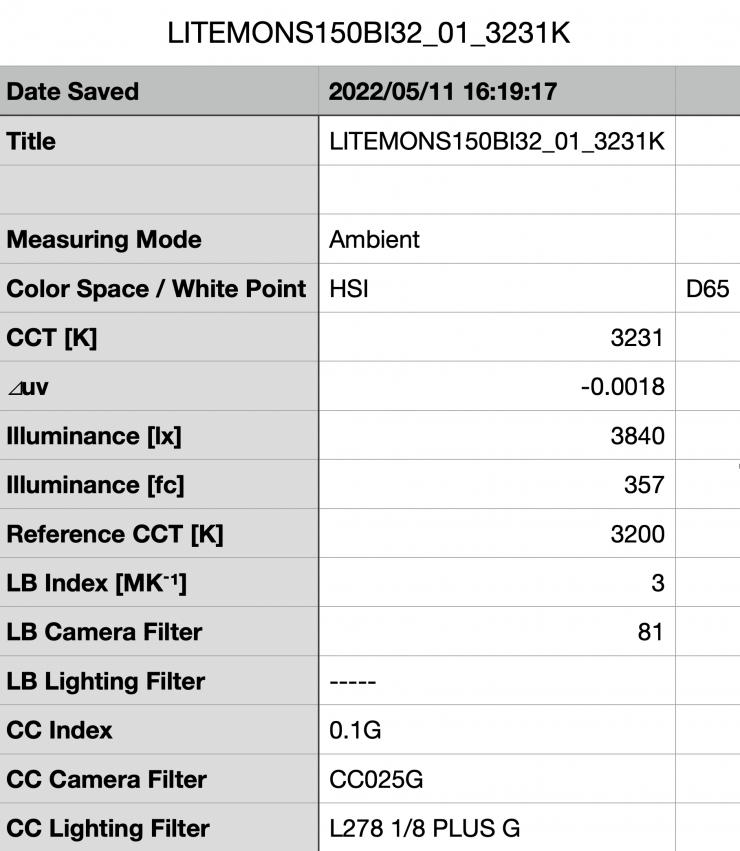
Above you can see that the light when used at 3200K without its reflector had an output of 3840lx (357 fc). This was 91.29% less output than when used with the reflector.
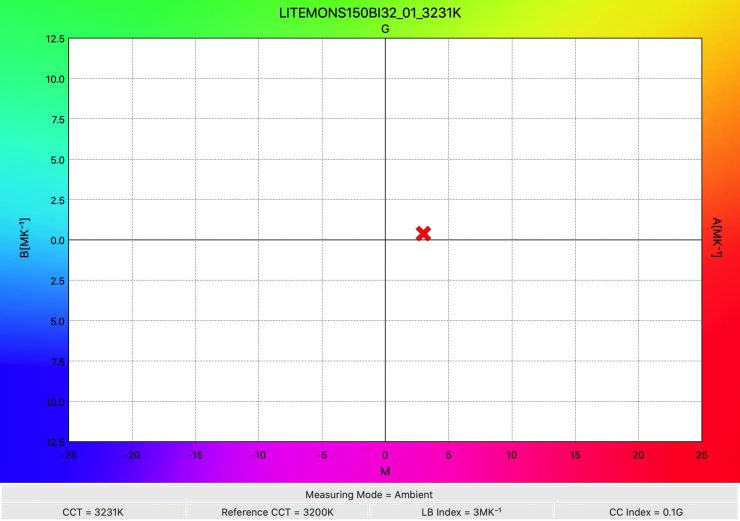
As far as Kelvin color temperature accuracy goes, it recorded a reading of 3231K which was excellent.
So how does this compare to the amaran 200x? Well, below you can see:
| OUTPUT | CCT | |
| Godox Litemons LA150Bi | 3840 lx | 3231K |
| amaran 200x | 5650 lx* | NA |
*Not independently tested. This is the claimed output.
The claimed figure for the amaran is a lot higher, but I can’t independently verify this figure.
How does it perform at various Kelvin color temperatures?
Summary of results (Reflector)
| SETTING | OUTPUT | CCT READING |
| 2800K | 34,200 lx | 2759K |
| 3200K | 41,100 lx | 3214K |
| 4500K | 63,500 lx | 4442K |
| 5600K | 62,700 lx | 5456K |
| 6500K | 53,600 lx | 6283K |
These results show me that the light’s output varies dramatically over its Kelvin color temperature range.
The Litemons LA150Bi output varies by a whopping 46.14% across the whole Kelvin spectrum. This is something you need to be clearly aware of when using this light. Really good lights generally tend to have consistency when it comes to output across their Kelvin color temperature range.
The Kelvin color temperature accuracy across the range is also pretty good, except at 6500K.
Is there a hot spot when using the reflector?
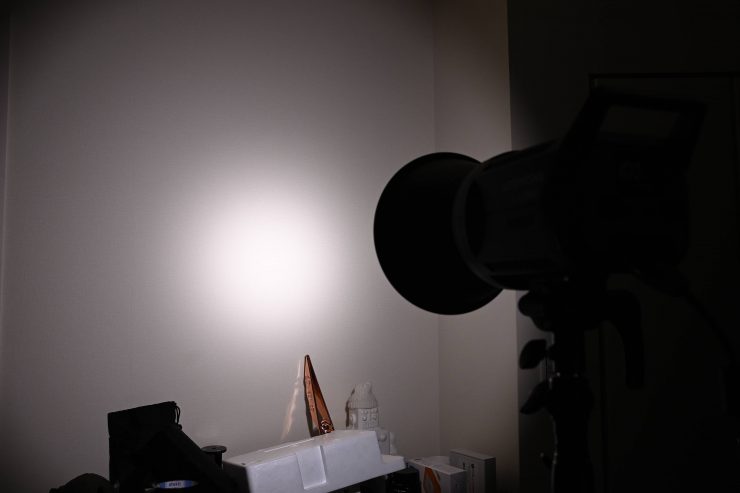
Yes, there is. Just like the amaran 200x, the Godox reflectors are designed to provide a lot of output and to give high lux readings, but this is because the lights have a very prominent hot spot.
Most people are generally going to be using fixtures like this with a lighting modifier such as a softbox, so having a hotspot with the reflector isn’t necessarily a big deal or caveat.
Kelvin color consistency & linear output when dimming the light
Now, what you should always do when testing lights is to see if the Kelvin color temperature remains consistent when dimming the light. Just because you set a light at say 5600K, that doesn’t mean that the Kelvin color temperature will remain stable as you start dimming the fixture down. I also wanted to see how linear the dimming curve was.
I decided to do a series of tests at 100%/75%/50%/25%10% to see if the Kelvin color temperature being recorded changed. This was done at a distance of 1m using a Sekonic C-800.
Litemons LA150Bi
| CCT READING | OUTPUT | INTENSITY % |
| 5456K | 62,700 lx | 100 |
| 5529K | 47,600 lx | 75 |
| 5511K | 32,400 lx | 50 |
| 5644K | 16,900 lx | 25 |
| 5800K | 8660 lx | 10 |
The Godox Litemons LA150Bi is able to maintain reasonable Kelvin color consistency as you start dimming the fixture down to around 25%. Once you go below 25% it does start to drop off. My testing showed that the Kelvin color temperature only varied by 188K from 100% to 25%. These are good results and it shows me that you can dim this fixture down to about 25% without having to worry about big changes in Kelvin color temperature.
As far as how linear the output is when you start dimming the light, at 50% output it had 48.24% less output than when used at 100%. At 25% it had 73% less output than when used at 100%. At 10% output it had 86.16% less output than when used at 100%. This shows me that the light’s dimming curve is pretty linear.
5600K Reflector
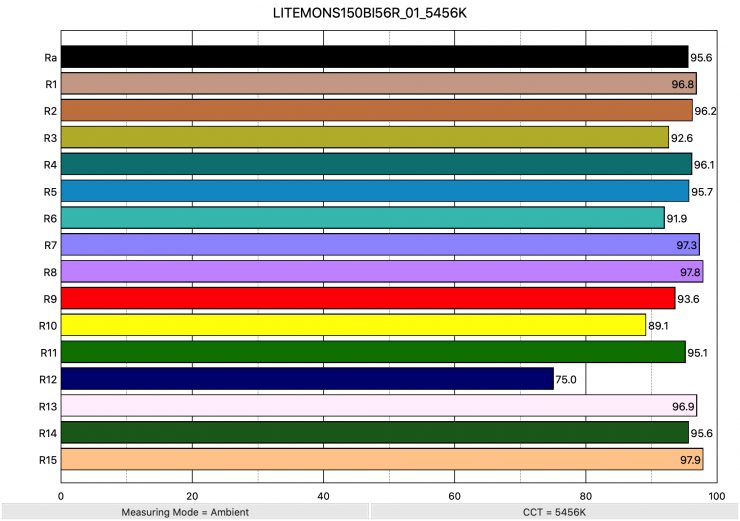
So now that we have seen how much output the Godox Litemons LA150Bi produces, how does it perform when it comes to replicating accurate colors? Above you can see that when the light was set at 5600K using the standard reflector it recorded an average CRI (R1-R8) of 95.6 and an extended CRI (R1-R15) of 93.84. For replicating accurate skin tones it recorded for R9 93.6 (red), 96.9 for R13 (closest to caucasian skin tones), and 97.9 for R15 (closest to Asian skin tones). These are all very good results. The light does struggle to produce Blue (R12) with a score of just 75.
As a comparison, when the Litemons LA150D was set at 5600K using the standard reflector it recorded an average CRI (R1-R8) of 96.1 and an extended CRI (R1-R15) of 94.49. For replicating accurate skin tones it recorded for R9 94.2 (red), 97.8 for R13 (closest to caucasian skin tones), and 98.1 for R15 (closest to Asian skin tones). This tells me that the daylight-only version of the light has slightly better color rendering scores, but not by much.
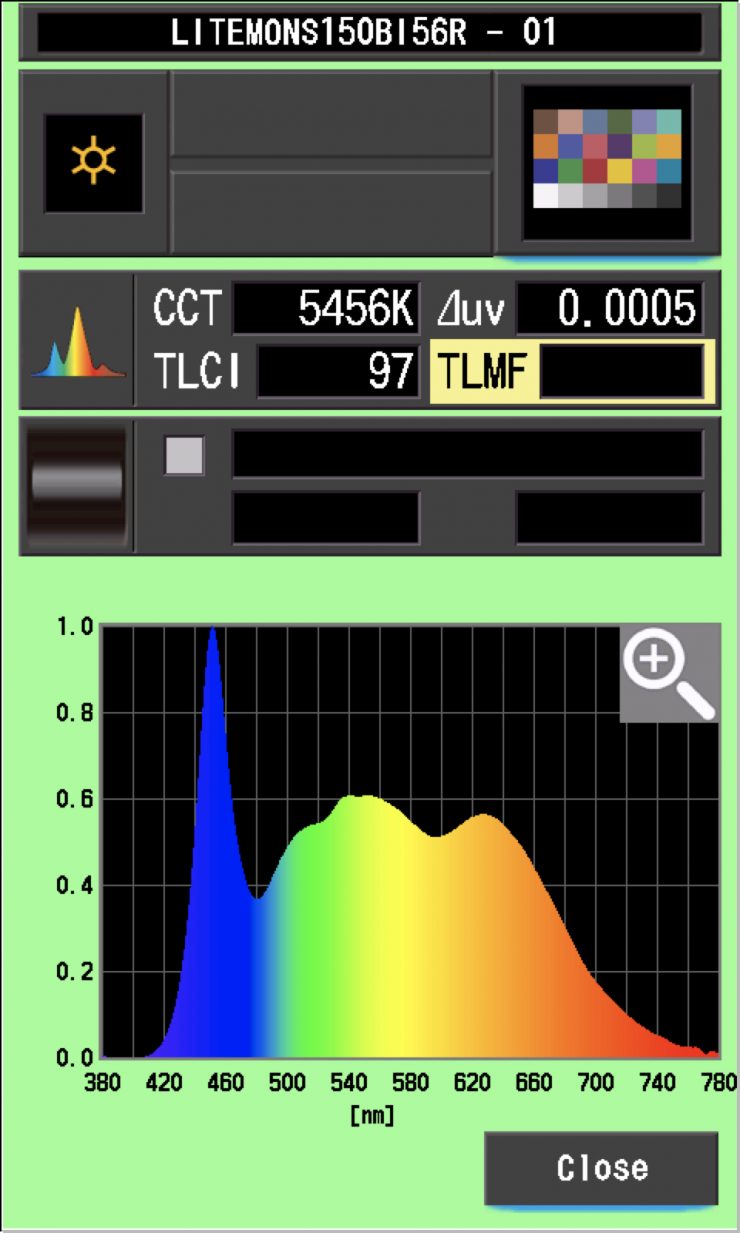
The light recorded a TLCI score of 97.
3200K Reflector
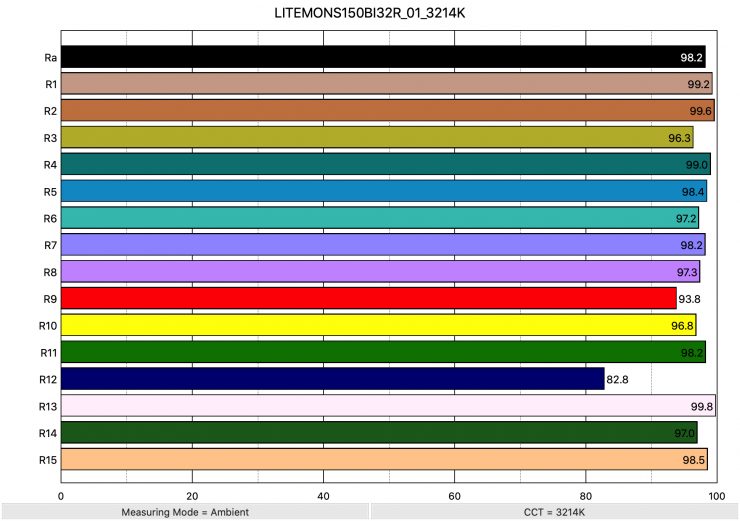
Above you can see that when the light was set at 3200K using the standard reflector it recorded an average CRI (R1-R8) of 98.2 and an extended CRI (R1-R15) of 96.80. For replicating accurate skin tones it recorded for R9 93.8 (red), 99.8 for R13 (closest to caucasian skin tones), and 98.5 for R15 (closest to Asian skin tones). These are all outstanding results and some of the best I have ever seen from any LED light when used at 3200K.
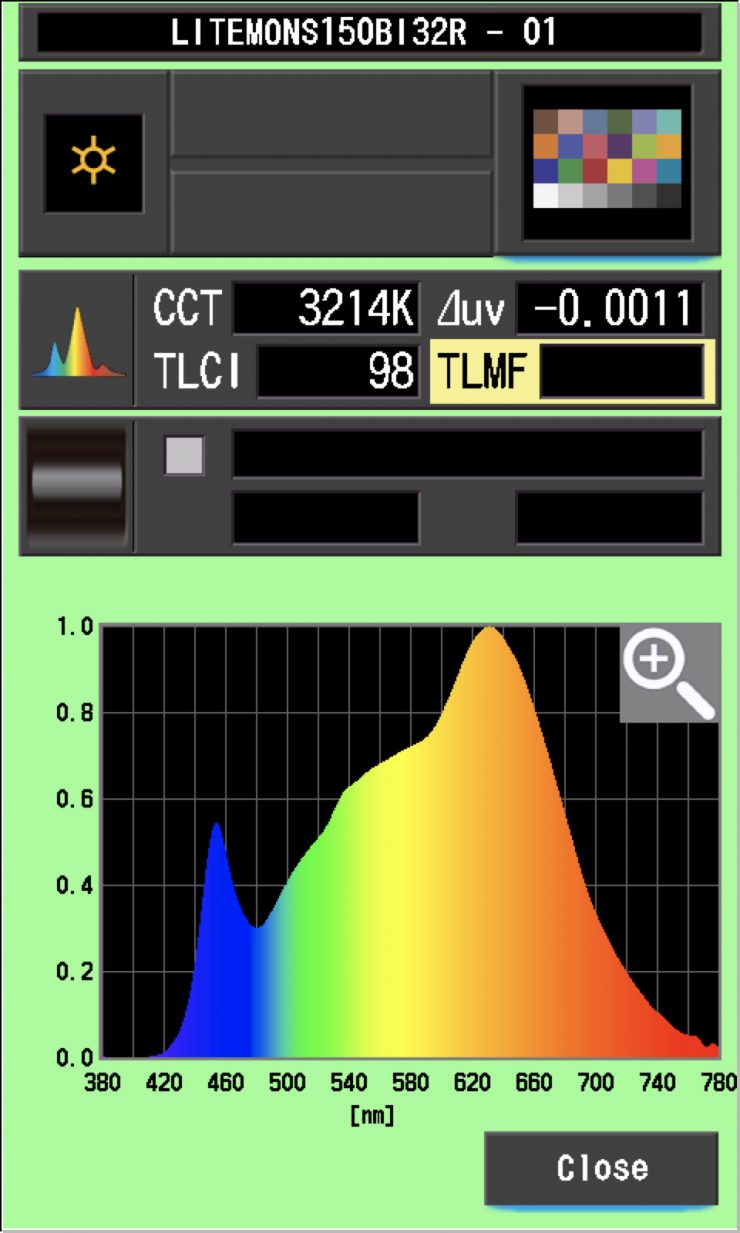
The light recorded a TLCI score of 98.
CC Index & ⊿uv
The CC Index displays the CC correction value and whether any magenta or green needs to be added or subtracted. 1 CC corresponds to 035 Kodak CC values or 1/8 Rosco filter values. Any reading less than +1.00 or -1.00 and you’re probably not going to need to make any kind of adjustment. The ⊿uv is the value to show how much this light is away from being an ideal light source (black body radiation = incandescent lamp). As with the CC Index you want this number to theoretically be zero. Kelvin is not a linear value, so we need to convert from Kelvin to MK-1 to compare the values of color temperature. To calculate from Kelvin to Mired is MK-1= 1*1000000/Kelvin. While this may sound confusing, it is the only way of measuring if the Kelvin shift is significant enough to warrant having to use a filter for correction. Below are the results for the Godox Litemons LA 150Bi:
Kelvin Vs MK-1
| Kelvin | Difference in K | MK-1 | Difference in MK-1 | |
| SET VALUE | 2800K | 0 | 357.14 | 0 |
| ACTUAL READING | 2759K | 41 | 362.45 | -5.31 MK-1 |
| SET VALUE | 3200K | 0 | 312.5 | 0 |
| ACTUAL READING | 3214K | 14 | 311.13 | 1.37 MK-1 |
| SET VALUE | 4500K | 0 | 222.22 | 0 |
| ACTUAL READING | 4442K | 58 | 223.21 | -1.91 MK-1 |
| SET VALUE | 5600K | 0 | 178.57 | 0 |
| ACTUAL READING | 5456K | 144 | 183.28 | -4.71 MK-1 |
| SET VALUE | 6500K | 0 | 153.84 | 0 |
| ACTUAL READING | 6283K | 203 | 159.15 | -5.31 MK-1 |
These figures might look confusing, but what it tells me is that the light is pretty Kelvin color accurate at all temperatures. Any MK-1 score that is under -9/9 means you wouldn’t have to use any color correction gels. Ideally, you want a score that is less than +/- 6 MK-1.
CC INDEX & ⊿uv
| CC INDEX | ⊿uv | |
| 2800K | 0.3M | 0.0030 |
| 3200K | 0 | -0.0011 |
| 4500K | 0.2G | -0.0029 |
| 5600K | 0 | 0.0005 |
| 6500K | 0 | 0.0020 |
These scores were pretty good, especially when using the light at both 3200K and 5600K. The lights CC INDEX scores were excellent across its Kelvin color temperature range. Any CC Index score below 1.0 G or M means you probably wouldn’t need to use any gel.
TM-30
TM-30 is a relatively new color rendering standard that was developed to deal with the limitations of CRI. TM-30 looks at 99 individual colors. These 99 colors are categorized into seven groups: nature, skin color, textiles, paints, plastics, printed material, and color systems.
TM-30 scores go from 0 – 100. The higher the score, the more accurate a light is at producing colors. Any TM-30 Rf score in the ’90s is considered to be good. What is interesting and something that you need to be very aware of is that two separate light sources with the exact same CRI scores can render colors very differently. A light with a high CRI rating could have a low TM-30 score. Conversely, a light with a good TM-30 score could have a bad CRI score.
Now, there are two measurements associated with TM-30, Rf and Rg.
- Rf (Color Fidelity)
- Rg (Color Gamut)
With Rf value, ideally, you want a score in the 90’s.
With Rg value, a score below 100 indicates that the light source renders colors with less saturation than the reference source. So ideally you want this score to be above 100.
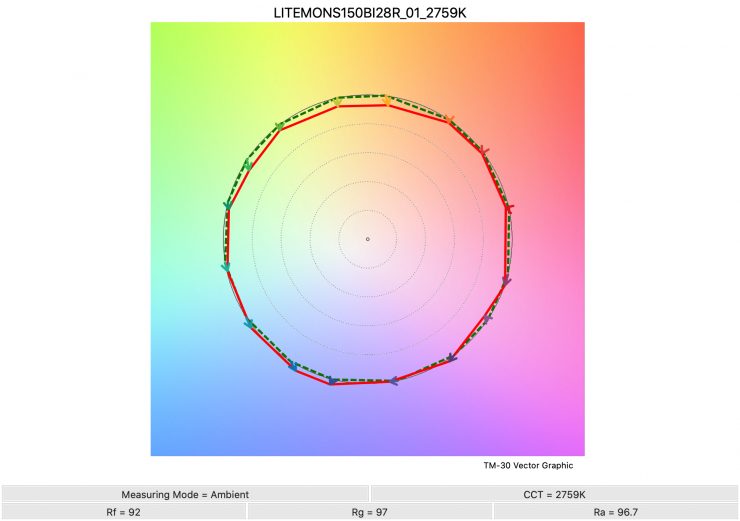

2800K 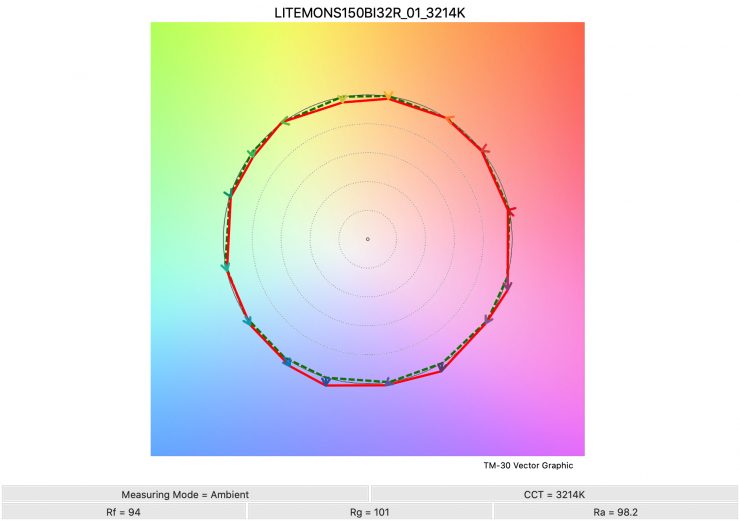
3200K 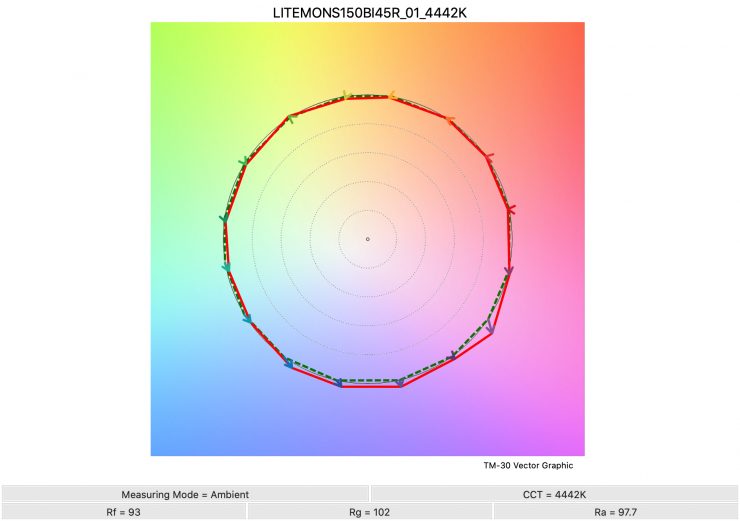
4500K 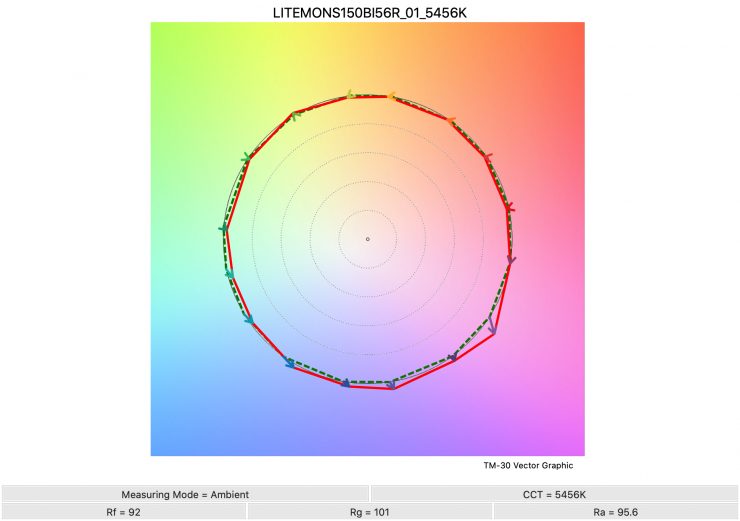
5600K 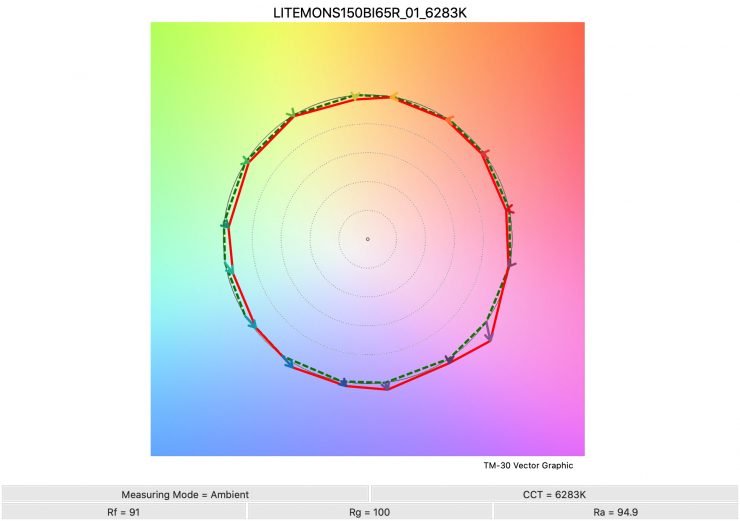
6500K
Above you can see the scores for the Godox Litemons 150Bi.
Here are the results:
Godox Litemons LA150Bi
| Rf | Rg | |
| 2800K | 92 | 97 |
| 3200K | 94 | 101 |
| 4500K | 93 | 102 |
| 5600K | 92 | 101 |
| 6500K | 91 | 100 |
These are decent scores, except for at 2800K where the light could only register an Rg score of 97.
SSI
SSI (Spectral Similarity Index) was developed by the Sci-Tech Council of the Academy. SSI gives me the ability to set any light as a standard, or use predefined standards (such as CIE D55), and then give other lights an SSI score based upon how well they will match standards such as CIE D55. This way I can measure spectral response and compare it directly against an ideal light source. This is actually a much better test than recording CRI scores.
5600K (Reflector)
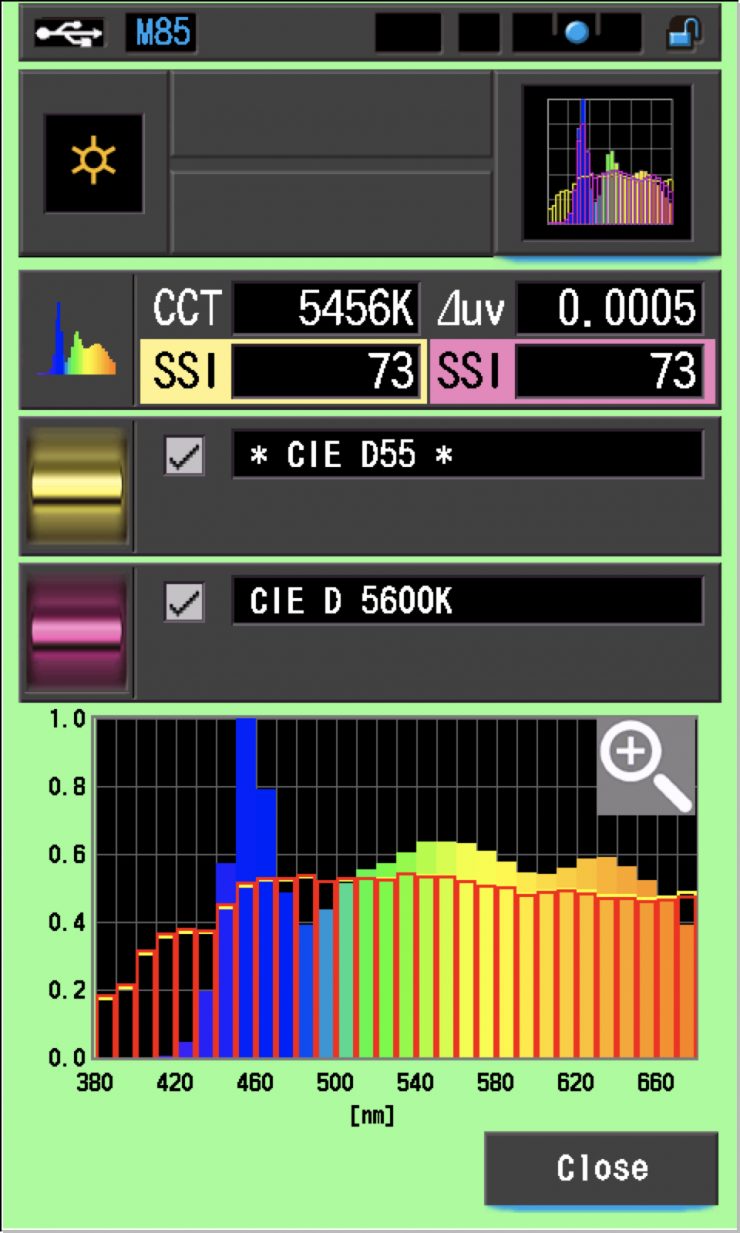
In the graph above the gold bars indicate a perfect CIE D55 source. The red bars indicate a perfect CIE D 5600K source. This lets us compare how close to a perfect 5600K lighting source the Litemons LA150Bi is. A score in the low 70’s is typical for a 5600K LED source.
The main reason we want to record SSI scores is so we can see how well they match with other lights. As an example, I wanted to see how well the Litemons LA150Bi matched the Godox Litemons 150D and the ARRI Orbiter. Below you can see the results.
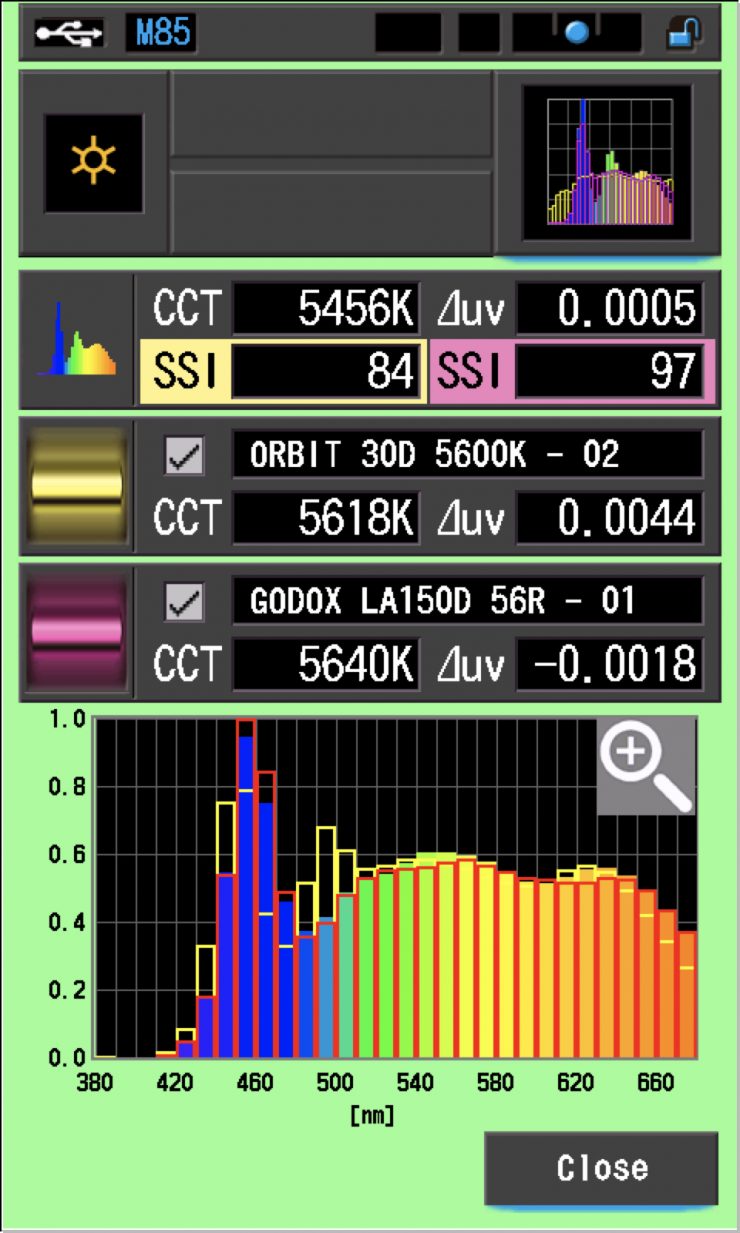
As you can see the Litemons LA150Bi and Litemons LA150D are almost a perfect match, however, the Godox doesn’t really match up well with the ARRI.
3200K (Reflector)
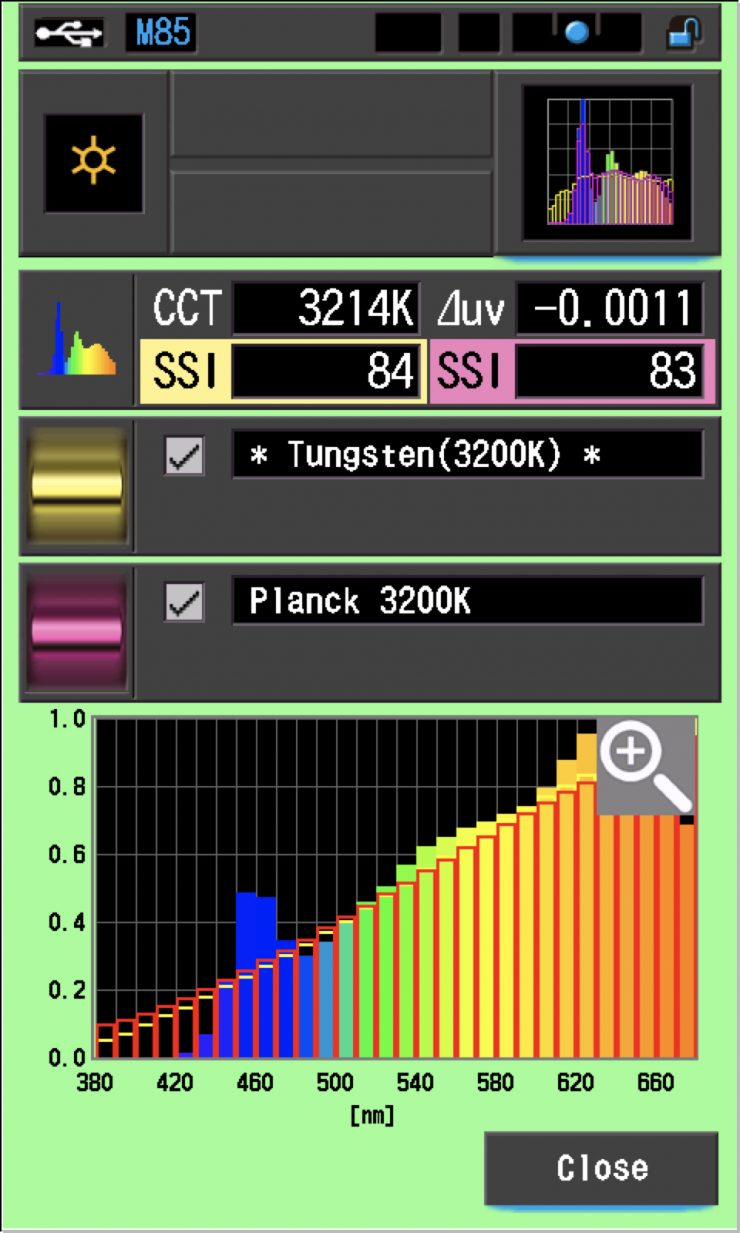
In this graph, the red bars indicate a perfect Planck 3200K source. The gold bars indicate a perfect 3200K Tungsten source. This lets us compare how close to a perfect 3200K lighting source the Litemons is. Any SSI score in the low ’80s is very good for a 3200K LED light. As you can see, LED lights have a hard time replicating colors below about 450nm. The scores for this light when used at 3200K were impressive.
The main reason we want to record SSI scores is so we can see how well they match with other lights. As an example, I wanted to see how well the Litemons 150Bi matched the Nanlite Forza 720B and the ARRI Orbiter. Below you can see the results.
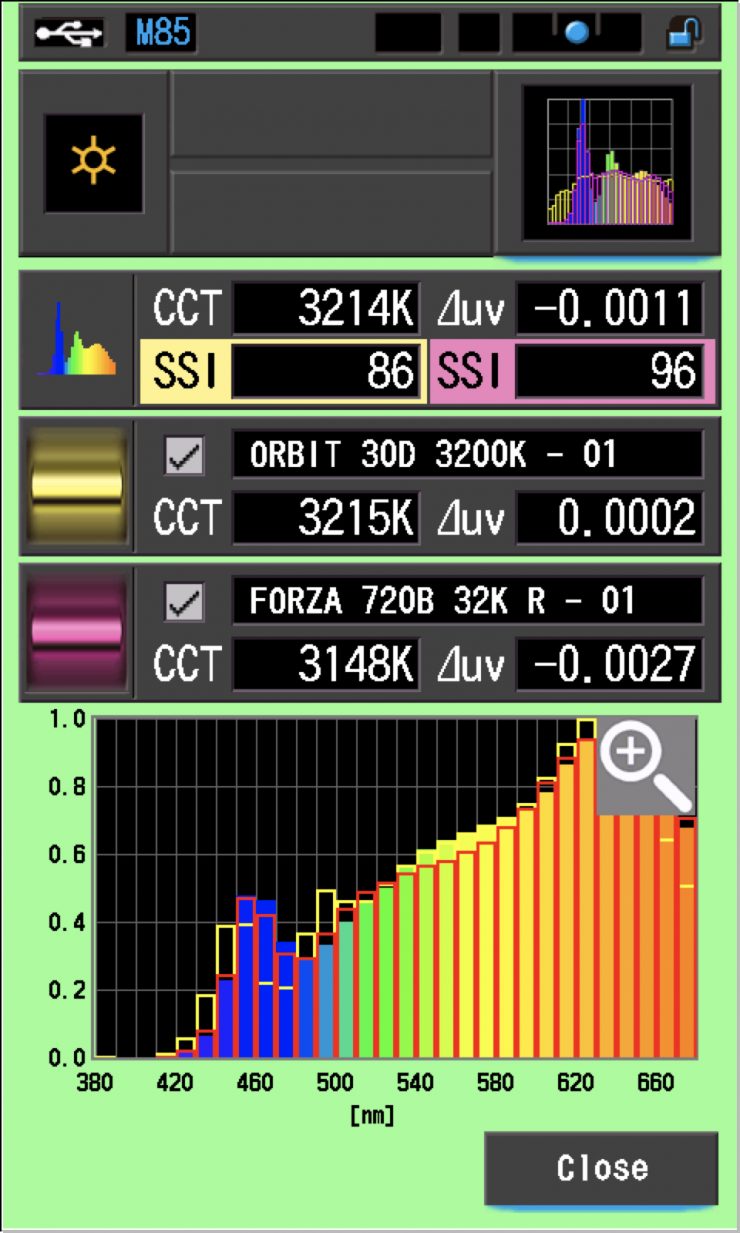
As you can see the Litemons 150Bi and nanlite Forza 720B are almost a perfect match. It even was a reasonable match to an ARRI Orbiter when used at 3200K.
SSI tests are a great way of telling you what lights you own or use will work well together.
Spectral Distribution
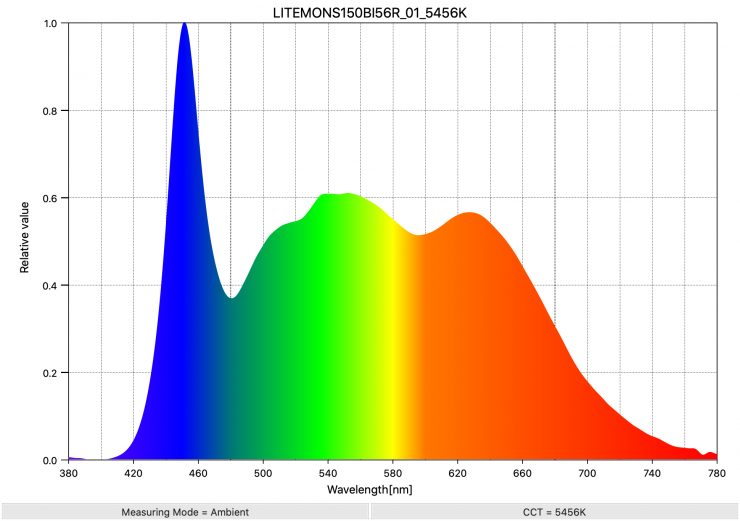
Above you can see the spectral distribution of the Godox Litemons 150Bi when used at 5600k. The spectral distribution is reasonably good and there aren’t any big spikes where there shouldn’t be.
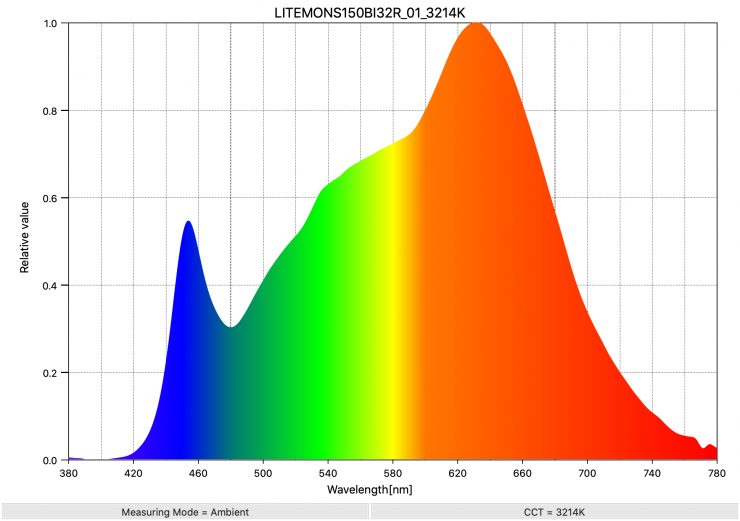
Above you can see the spectral distribution of the Godox Litemons 150Bi when it is used at 3200K. The spectral distribution is very good when the light is set at 3200K.
Accessories
Just like most affordable COB lights, the Godox Litemons 150Bi uses a Bowens mount you can attach a large range of affordable accessories and modifiers. If you own multiple lights that utilize a Bowens mount you can swap and switch around accessories.
Real-World Performance & Quality of Light
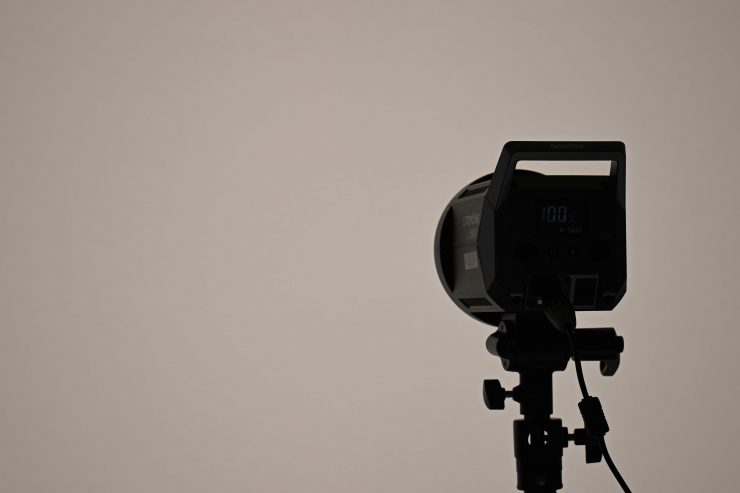
As I always say, photometric scores only tell you part of the story. So let’s find out if the scores from the Litemons LA150Bi translate into good real-world performance.
The photometric data can only give me scientific data and it is much more important for me to see how the light looks and performs.
Unfortunately, it is very hard at the moment with the Coronavirus for me to showcase the strengths of the light. I live in Japan in an apartment so there isn’t a lot of space to do much testing. I apologize that I can’t do more!
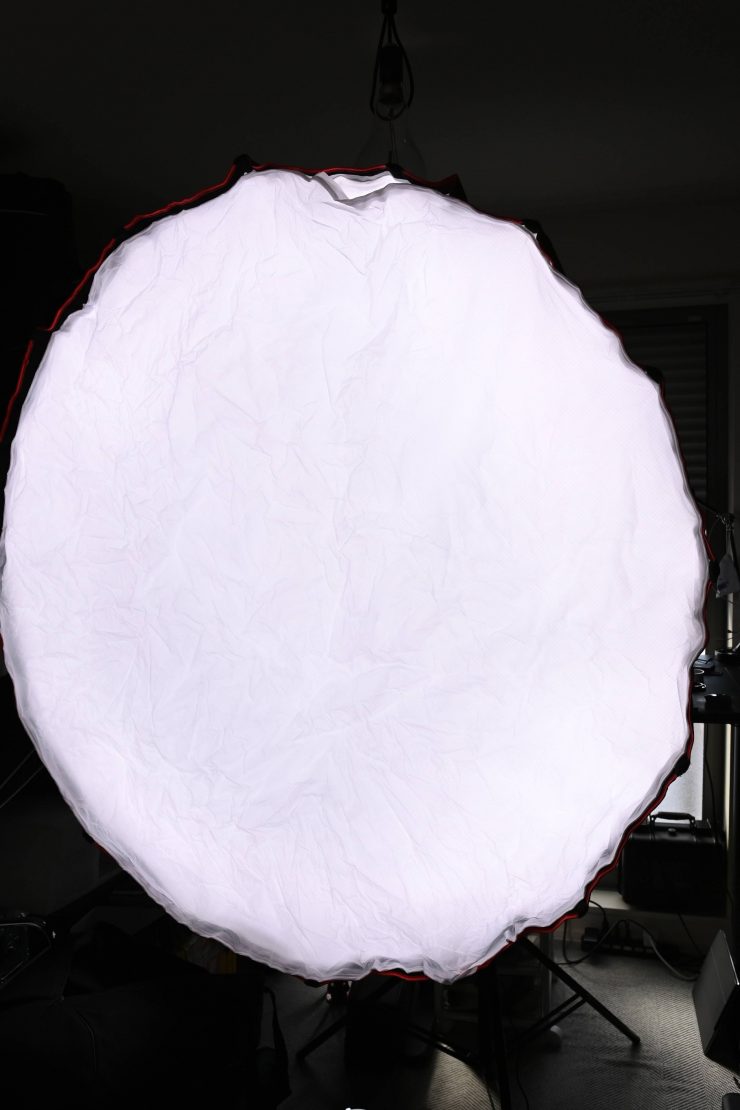
It is very easy to create a soft, flattering light source using the Godox fixtures by using modifiers like a softbox, however, it needs to be reasonably close to your subject. This makes it a very quick and easy light to use for interview situations or for any scenario where you need soft light as long as you don’t need to match any type of bright background. The light when used open face is a wide enough beam spread that it will fill up a large-sized softbox.
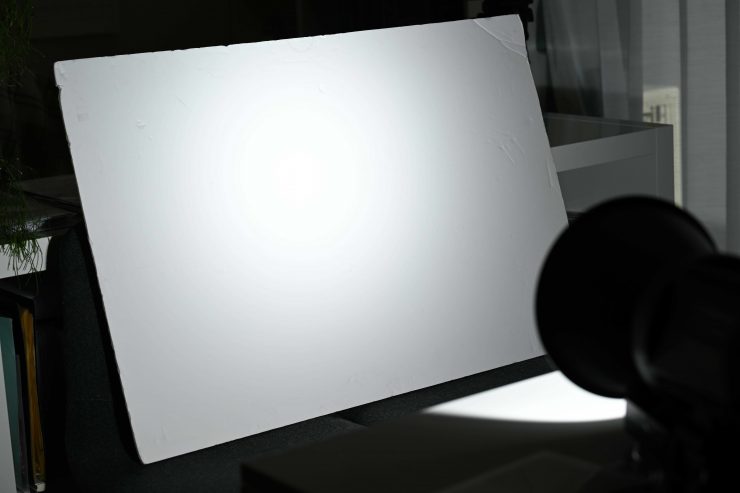
The lights work well if you use them with their reflectors and punch them into some polyboard or other reflective material.
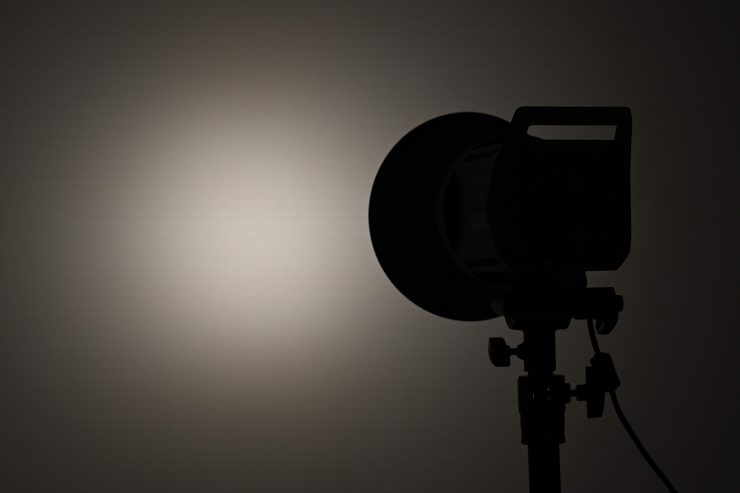

Reflector 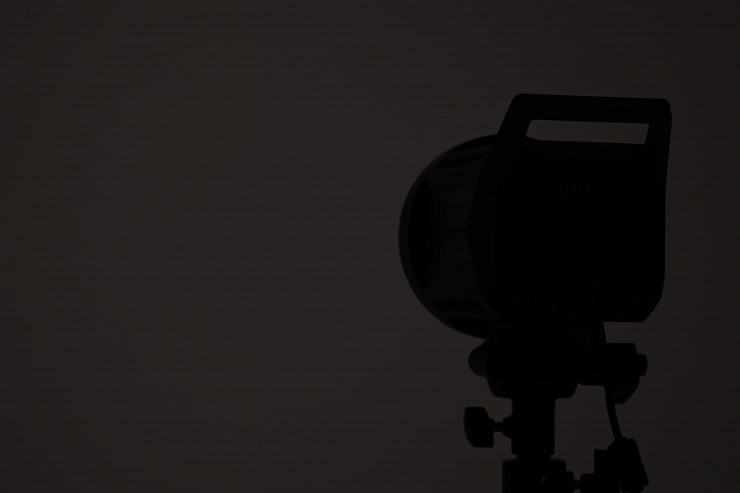
No reflector
As I previously mentioned in the review, the lights do have a very prominent hot spot in the middle when you use the included reflector. I didn’t find this to be a massive problem as I personally would never use lights like these as a direct source when a reflector was attached. Above you can see examples of light with and without the reflector being used that were taken at the exact same settings.
Who is this light aimed at?
You could use this light for lots of different applications, but the fixture is certainly being aimed at budget-conscious shooters who want a good quality COB fixture that won’t cost a fortune.
It is priced to appeal to owner-operators who are looking for a jack-of-all-trades lighting solution. The fixtures have the ability to be a hard light source or a soft source. There is a reason that COB lights such as this have become very popular with shooters and that is because of their versatility.
The Godox is likely to appeal to solo shooters and small crews who are looking for a similar light to some of the offerings from amaran and other companies.
Price & Availability
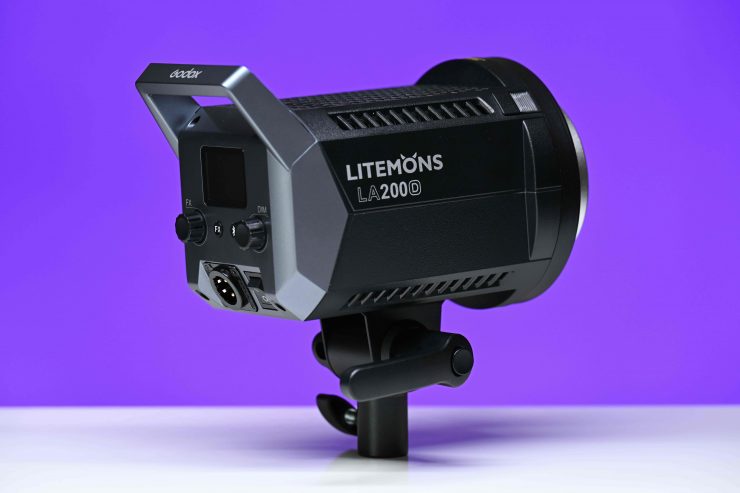
The Godox Litemons 150Bi retails for $259 USD. This makes it an appealing prospect for those shooters who are looking for a light that offers features and functionality that are usually only found in much more expensive fixtures.
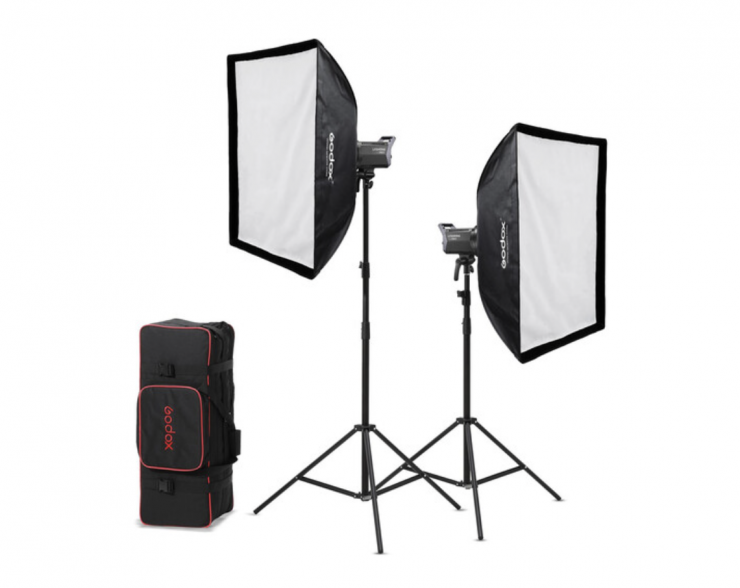
The Litemons LA150Bi is also available in a two-light kit for $619 USD.
Along with the lights, you also get:
- Reflector RFT-19
- Protection Cover
- Power Adapter
- Power Cord
- Fixing Band
- Wire Rope
- Limited 1-Year B&H Warranty
Below you can see how the price compares against the amaran 200x:
As you can see Litemons is considerably more affordable than the amaran.
Below you can see other options that are available in the Litemons range:
You can also buy the lights from Amazon here:
Godox LA 150bi
https://www.amazon.com/Litemons-2800K-6500K-Brightness-Adjustment-Bluetooth/dp/B09SNWHHL1/
Godox LA 150D
https://www.amazon.com/Litemons-84800lux-Brightness-Adjustment-Bluetooth/dp/B09SP66FQF/
Godox LA 200bi
https://www.amazon.com/Litemons-2800K-6500K-Brightness-Adjustment-Bluetooth/dp/B09SPCZ88K/
Godox LA200d
https://www.amazon.com/Litemons-101000lux-Brightness-Adjustment-Bluetooth/dp/B09SP1DJDW/
Conclusion
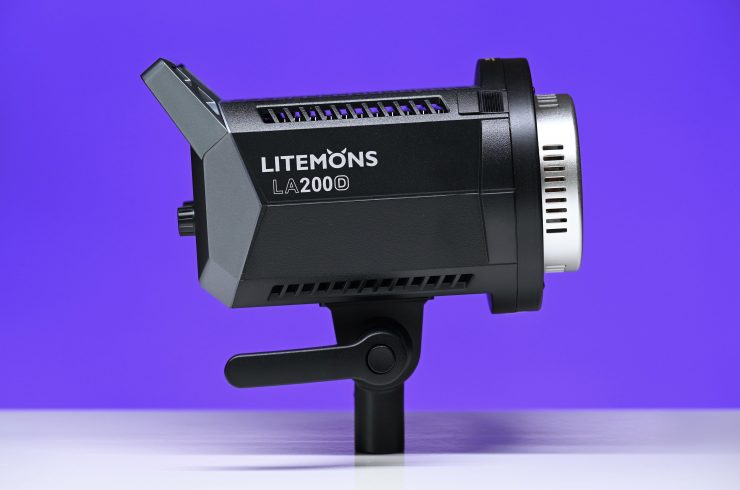
The Godox Litemons 150Bi is a decent fixture that offers good color rendering and decent output at an affordable price. The light is versatile and it produces a nice quality of light.
The interface and operating system are straightforward and easy to use, as is the app. By utilizing a Bowens Mount you can utilize a large array of lighting modifiers without having to spend a ton of money.
The only real caveats with this fixture are the hot spot when using the reflector, although you will find the same issue with the competing amaran 200x, and the fact that the light’s output varies quite dramatically across its Kelvin color temperature range. Just like the amaran offering, this is meant to be an affordable, lightweight fixture that gets the job done with a minimum of fuss. There is nothing overly special about this light, but you know what, that is ok. For the price, it does a good job.
With a lot of modern LED lights, the quality of the LEDs being used is very similar, even across the price spectrum. What separates the lights comes down to build quality, features, and usability.
The Godox Litemons offerings, just like the amaran lights may not be as well made or built as more expensive fixtures, but they are still decent considering how much they cost. You can buy a few lights without having to spend a ton of money and that is likely to appeal to a lot of shooters.
Like what we do and want to support Newsshooter? Consider becoming a Patreon supporter and help us to continue being the best source of news and reviews for professional tools for the independent filmmaker.

